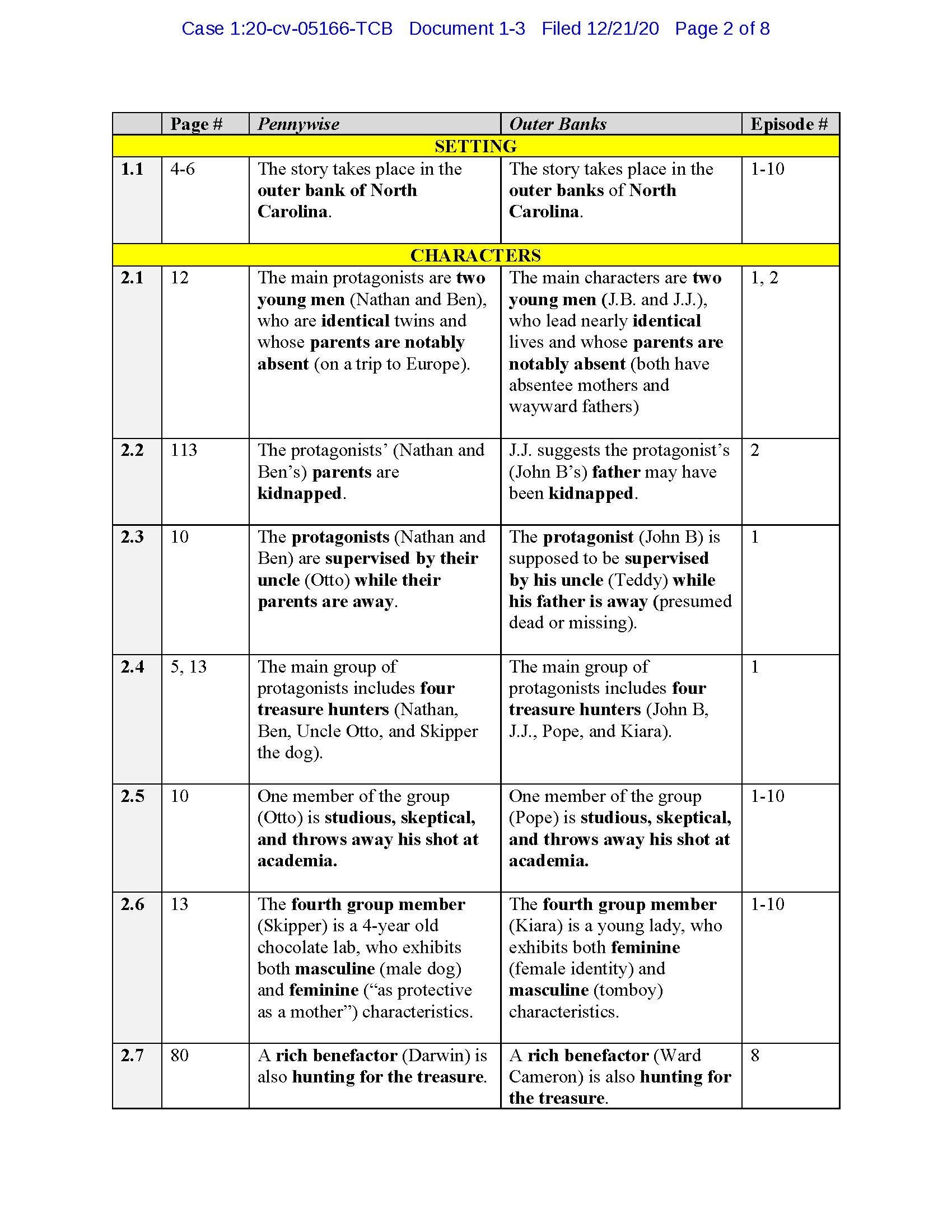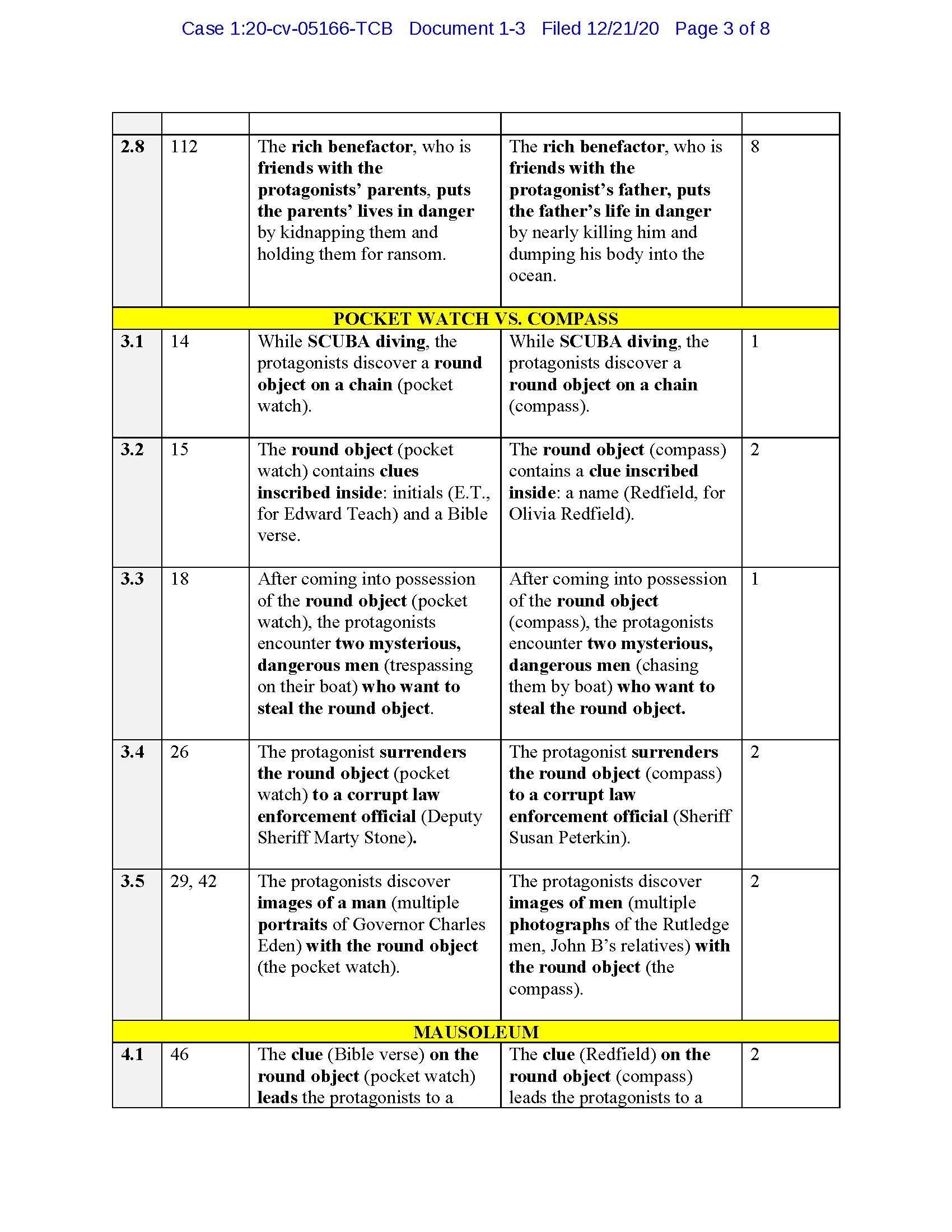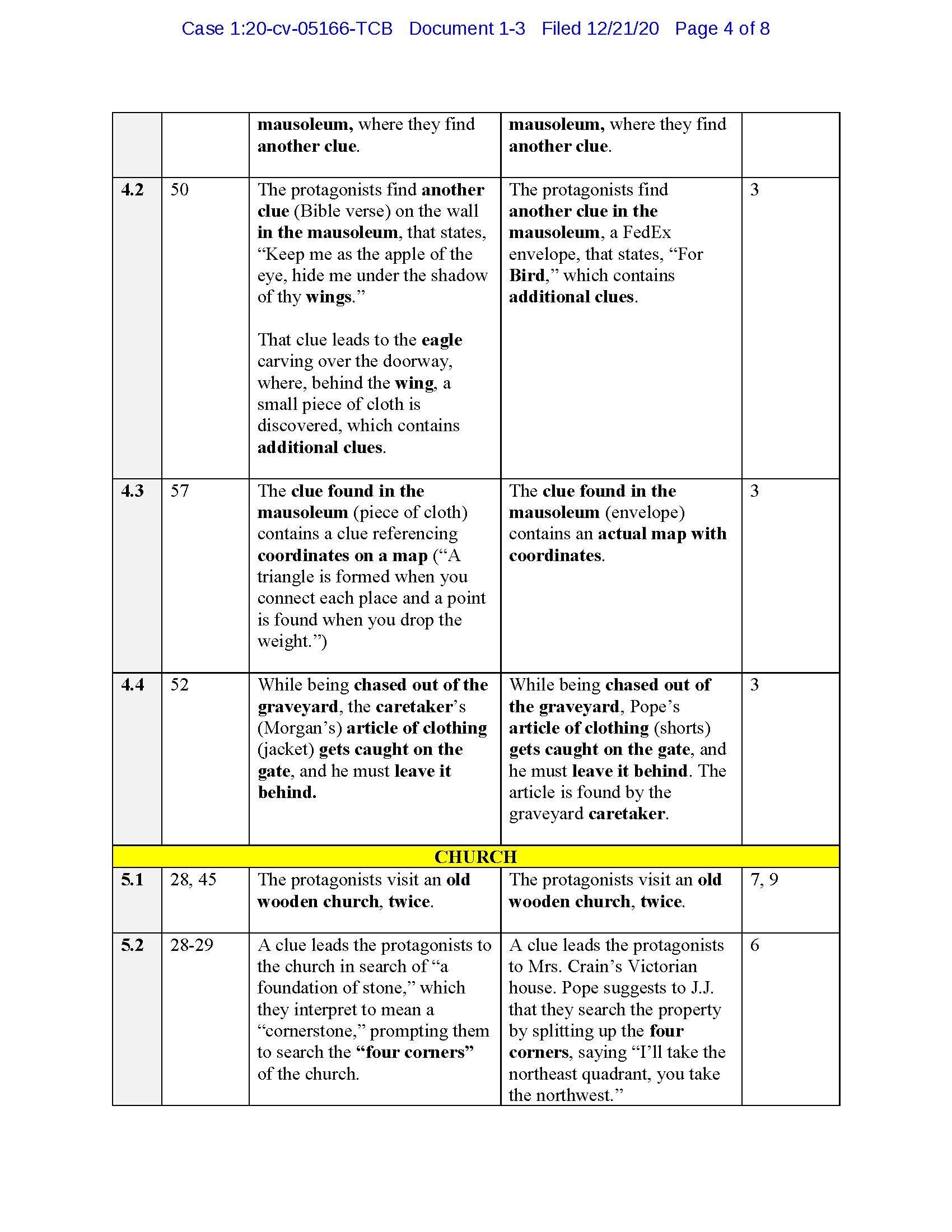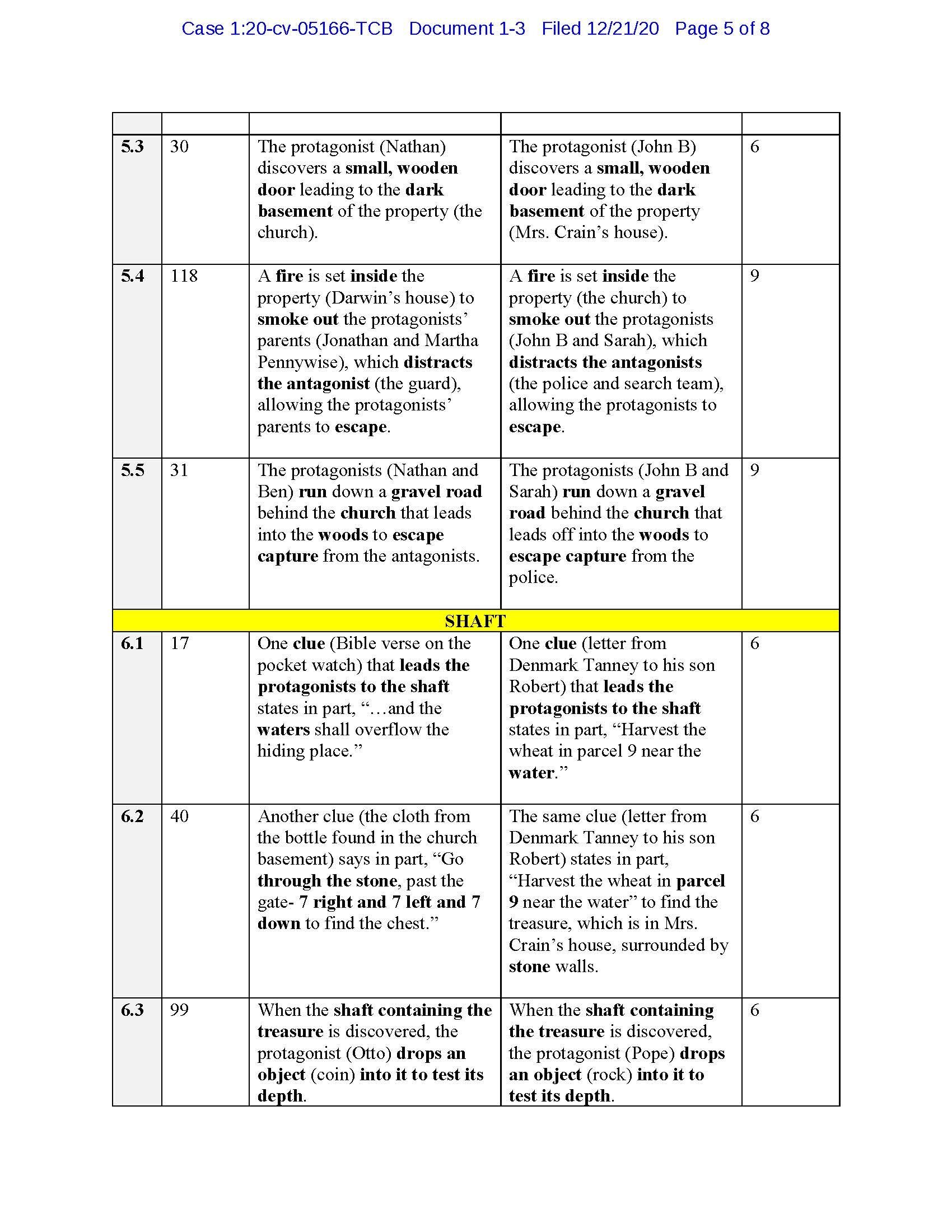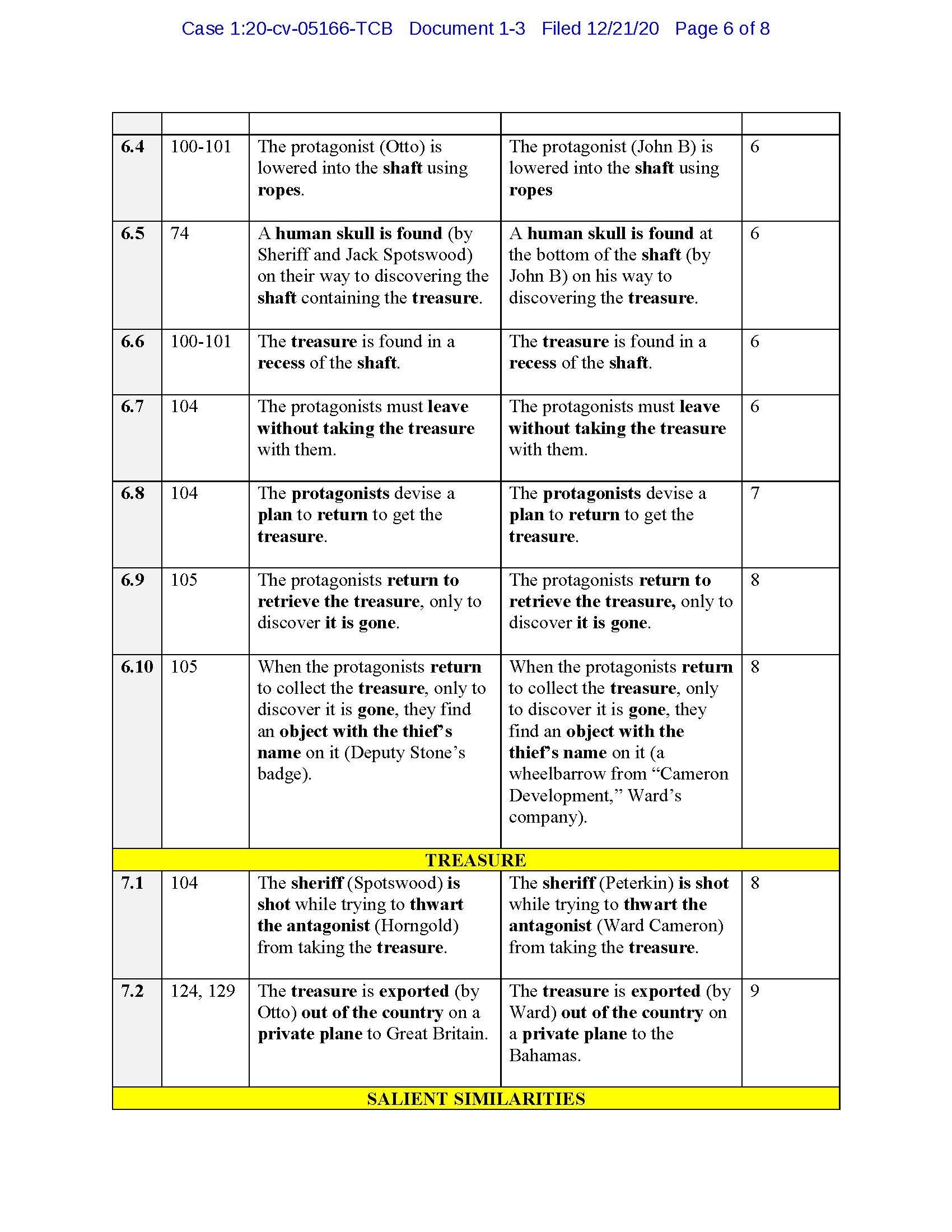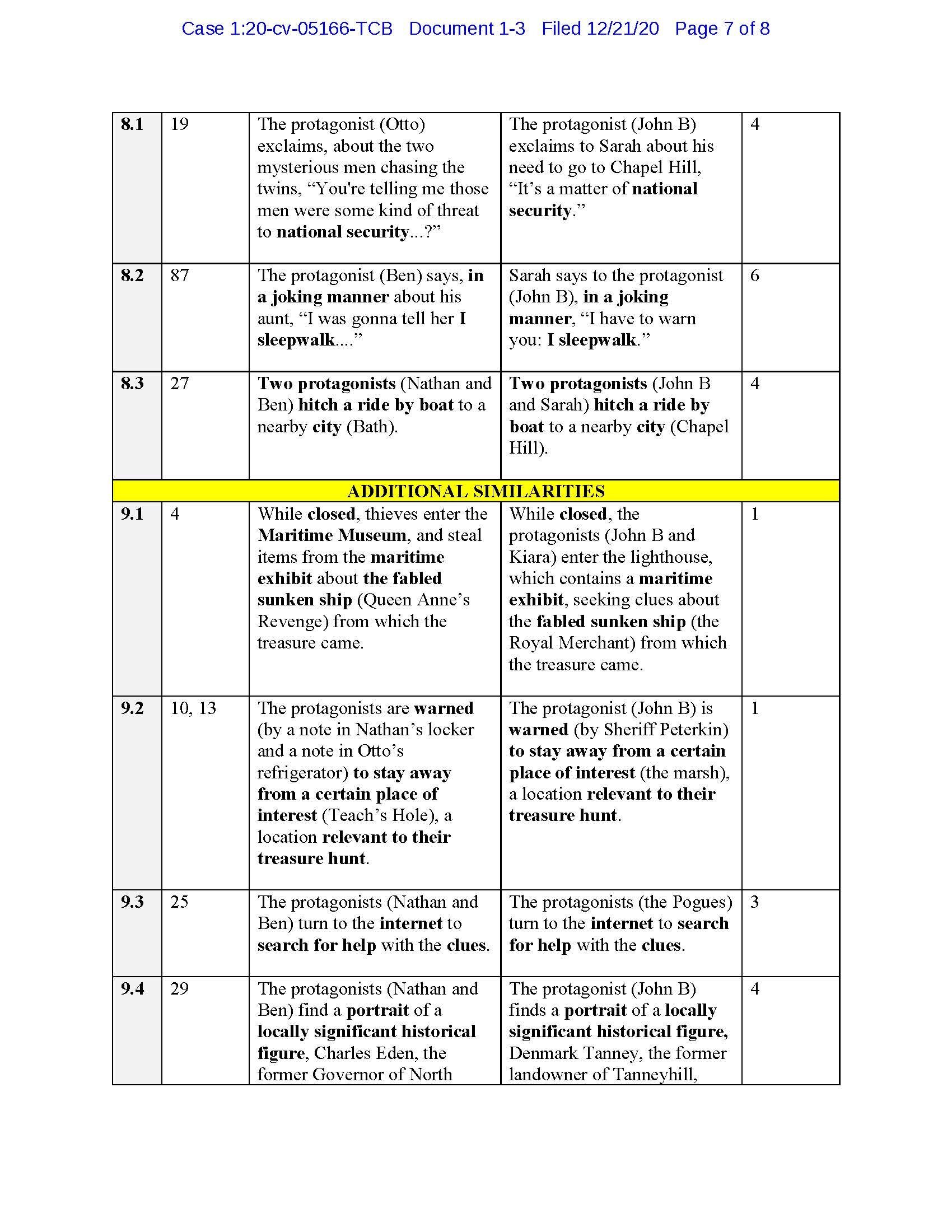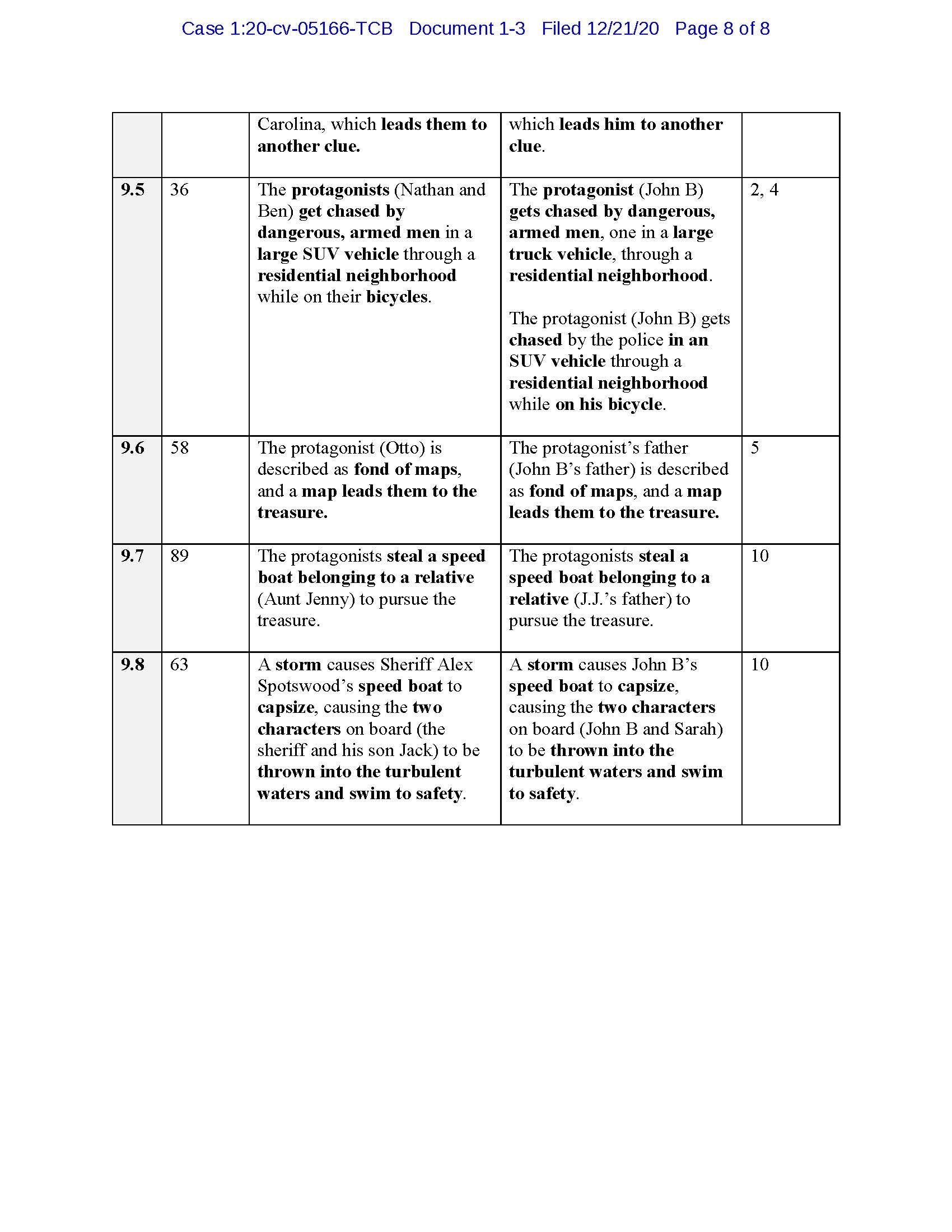
Lawyer Magazine: How Do You Stay Updated with the Latest Legal Precedents?
Attorney Hastings featured on Lawyer Magazine: Read Court Opinions and Engage in Forums
“Staying updated with the latest legal precedents is crucial to effectively representing my clients. I regularly read opinions from courts, especially those from higher courts like the Supreme Court and appellate courts, to understand the evolving interpretations of the law. I also subscribe to legal journals and newsletters that summarize significant rulings and emerging trends in various areas of law. Attending legal seminars and continuing education courses allows me to discuss recent developments with my peers and gain insights from experts in the field. Finally, I engage in online legal communities and forums where attorneys share updates and strategies related to new case law. This combination of resources ensures that I remain informed and ready to apply the most current legal principles in my practice.”
Read more: https://lawyermagazine.co/qa/how-do-you-stay-updated-with-the-latest-legal-precedents
Follow-Up: Now that the Pfizer COVID-19 Vaccine has been granted full FDA approval universities have already responded with vaccine mandates.
By: Briscoe Robinette
On Monday, August 23rd, 2021, the Food and Drug Administration (“FDA”) granted full approval to the Pfizer-BioNTech coronavirus vaccine. Full approval means the vaccine has passed through the same intense testing and review as other established vaccines instead of the shortened process utilized for the vaccine’s initial emergency approval. Some experts have hailed the full approval as “an important confidence-builder” for those hesitant about receiving the vaccine, while others argue that the full approval won’t lead to as large an increase in vaccination rates as some hope. However, many experts do agree that the approval has the potential to spark a large number of vaccine mandates by both employers and universities, especially considering the spike in cases caused by the delta variant.
By: Briscoe Robinette
On Monday, August 23rd, 2021, the Food and Drug Administration (“FDA”) granted full approval to the Pfizer-BioNTech coronavirus vaccine. Full approval means the vaccine has passed through the same intense testing and review as other established vaccines instead of the shortened process utilized for the vaccine’s initial emergency approval. Some experts have hailed the full approval as “an important confidence-builder” for those hesitant about receiving the vaccine, while others argue that the full approval won’t lead to as large an increase in vaccination rates as some hope. However, many experts do agree that the approval has the potential to spark a large number of vaccine mandates by both employers and universities, especially considering the spike in cases caused by the delta variant.
Therefore, the most significant increase in vaccinations may be the result of employers and other institutions requiring the vaccine, as opposed to individuals getting jabbed because full approval reassures them of the vaccine’s safety. We published a blog post earlier in the summer about whether universities have the authority to mandate vaccines. That post discussed the need for full approval before schools stood on a firm legal foundation. This post follows up on that one now that full approval for the Pfizer vaccine exists.
The Ohio State University issued a statement mandating vaccines campus-wide on the same day as the FDA announcement. Read the president’s message to the university community here. https://news.osu.edu/ohio-state-announces-vaccination-requirement/
Following the announcement of the vaccine’s full approval, a multitude of institutions announced vaccine mandates, including school systems, private companies, and state and federal institutions. President Joe Biden had already mandated vaccines for federal workers, otherwise requiring them to be tested weekly. As a result of the approval, the Pentagon is now in the process of requiring active-duty U.S. troops to receive the vaccine. In the private sector, both CVS and Disney World are requiring workers to get vaccinated. Higher education institutions also began quickly instituting vaccine mandates after the approval was granted. More institutions of higher learning mandating the vaccine other than Ohio State University include The State University of New York system, the University of Minnesota system, and the University of Louisiana system, and more.
The FDA’s decision to approve the Pfizer-BioNTech vaccine has resulted in a large number of institutions, in many different sectors, to put in place vaccine mandates. With this increasing number of vaccine requirements, along with the Moderna vaccine’s full approval likely coming in a few months, it seems these mandates will be becoming more common and legally defensible.
Looking Back: An initiative that changed the face of juvenile justice in North Carolina
By: Caroline Hoover
I campaigned and was appointed as one of two youth representatives for the western section of the North Carolina Juvenile Crime Prevention Council in 2019. Juvenile Crime Prevention Councils (“JCPCs”) are a division of the North Carolina Department of Public Safety. On August 29, 2019, I received my first official email affiliated with the position, entitled ““Teen Court and More” Strategic Planning Session”.
By: Caroline Hoover
I campaigned and was appointed as one of two youth representatives for the western section of the North Carolina Juvenile Crime Prevention Council in 2019. Juvenile Crime Prevention Councils (“JCPCs”) are a division of the North Carolina Department of Public Safety. On August 29, 2019, I received my first official email affiliated with the position, entitled ““Teen Court and More” Strategic Planning Session”. As I read through, I learned that a teen court is a problem-solving court within the juvenile justice system where teens charged with certain types of offenses can be sentenced by a jury of same-aged peers. I was taken aback, a verified legal mechanism created for the protection of minors? I had never heard of something simultaneously so outlandish and also based in the pursuit of legal justice. I thought: sign me up.
This initiative particularly made sense to me as in my community of Watauga County, clocking in at the second most impoverished in the state of North Carolina, I often bore witness to the pitfalls of a legal system that time after time disproportionately impacted poorer North Carolinians. One main issue I observed was that it frequently failed to identify a main side effect of severe poverty for many youth, being that of a removal of choice. If a parent required life-saving medicine but the family was unable to afford it, a way by which to acquire enough money to buy it, even illegally through drug-dealing, may seem as if it is the only option. If forced to witness a sibling silently battle child hunger, food theft would appear to be the right and only answer. The oftentimes “solutions” to these tragedies came in the form of adult trials and integration into the criminal system. These real stories that I witnessed day in and out, did not reduce my neighbors to criminals but rather awakened me to the socioeconomic barrier that kept those around me from real justice. Teen courts and the initiative behind them offered a way for these individuals to have an actual chance at sensible retribution that did not cycle them into the convoluted criminal system at the ripe ages of 17 or even 16.
I attended the “Teen Court and More” planning session mentioned in the email, and was introduced to a set of policies called the Juvenile Justice Reinvestment Act, more commonly referred to as the “Raise the Age Initiative”. This policy sought to revolutionize the legal system, keep those under 18 out of jail for minor crimes by raising the age of adult-trial to 18, and institute a state-wide standard for teen courts. The potential impact of such legislation was simply immeasurable.
From there I threw myself into my role, investigating the different forms teen courts take, what makes them most effective, and advocating for the passage of “Raise the Age”. I learned that in addition to benefiting the fairness of the legal system overall, teen courts taught youth the inherent value of civic engagement, not only for the sake of education but fo defense, of themselves and others.
On December 1, 2019, the Juvenile Justice Reinvestment Act was signed into law. In the year following its enactment, over 5,000 kids were kept out of the adult system. Remaining in the Juvenile system has meant more than a designation as “non-adult”. It has meant a focus on rehabilitation rather than punishment through age-appropriate services. It has meant a reduction by half in recidivism. It has meant the ever-widening institution of teen courts throughout the state with majoritively positive results. In the words of Kimberly Quintus, director of the Juvenile Justice Reinvestment Act Office, “To put it plainly, it was the right thing to do.”
Mandating COVID-19 Vaccination for College Students, What Can Colleges Enforce?
By: Briscoe Robinette
As COVID-19 vaccines become increasingly available, there is hope for some semblance of normalcy returning to the lives of citizens. However, as colleges and universities look towards planning a safe return for all students this upcoming fall semester, the debate over mandated COVID-19 vaccinations arises. Many U.S. universities have already declared that students must be fully vaccinated in order to return to campus.
By: Briscoe Robinette
As COVID-19 vaccines become increasingly available, there is hope for some semblance of normalcy returning to the lives of citizens. However, as colleges and universities look towards planning a safe return for all students this upcoming fall semester, the debate over mandated COVID-19 vaccinations arises. Many U.S. universities have already declared that students must be fully vaccinated in order to return to campus. They see mass vaccination as a way to provide a safe and healthy environment for students to return to, while other universities question both the legality and morality in requiring a vaccine that is only available under emergency approval. Mandating the vaccine would help to create herd immunity on campuses, with many arguing that students have the right to feel safe and not at risk for contracting COVID-19 while on campus. However, many also argue that colleges do not have the right to force students to get vaccinated as that is a personal choice, especially considering that the FDA has only allowed the vaccine to be administered for emergency use. Furthermore, mandating COVID-19 vaccinations also raises the issue of accessibility, as it is more difficult for some students to acquire the vaccine than others.
Colleges have been mandating vaccinations for many years. For example, a survey of 100 colleges and universities found that at least one vaccine was mandated by almost all of the institutions according to NPR. The COVID-19 vaccine raises different legal and ethical questions though, as the vaccine is only authorized for emergency use. Therefore, what legal basis does higher education institutions have in requiring students to receive the vaccine, especially considering the emergency authorization status of the vaccination?
Generally, issues of public health and the health of citizens fall mainly under the jurisdiction and authority of state and local governments and the power of those entities over mandating vaccinations has been cemented for many years. Most notably, in Jacobson v. Massachusetts, 197 U.S. 11, 25 S. Ct. 358 (1905), where the Supreme Court ruled that mandatory vaccinations fell under a state’s police powers, and that states had a duty to protect the health of their citizens.
After the Board of Health in Cambridge, Massachusetts made smallpox vaccinations mandatory, the plaintiff in error, Jacobson, was tried in a trial court for refusing to receive a smallpox vaccination. Jacobson introduced multiple arguments, including a bad reaction to a previous vaccine, regarding his refusal to be vaccinated but the trial court dismissed his arguments and found him guilty. The trial court ruled that Jacobson could not be harmed by the vaccination law since the state did not have the power to force him to get a vaccine. Therefore, if he chose not to get vaccinated, the most harm he would incur would be having to pay a fine. In Jacobson v. Massachusetts, 197 U.S. 11, 25 S. Ct. 358 (1905), the Supreme Judicial Court of Massachusetts then looked at the case and sustained the ruling of the trial court. The court ruled that an individual’s right to liberty can be reasonably regulated for the safety of the general public. Therefore, the court stated that local boards of health can require mandatory vaccination “when necessary for public health or safety,” as long as the Board of Health did not act in an unreasonable manner. In their ruling, the court stated that the police powers of the State have authority over regulating public health. Furthermore, the court declared that individual liberty as outlined in the Constitution does not give an individual the right to no regulation if regulation is necessary to ensure the safety and health of the public.
The power of the federal government to implement mandates, however, has not been tested in courts. Furthermore, the emergency authorization status of COVID-19 vaccine and how that affects vaccination mandates has also not been tried in court, making the current situation nuanced.
As mentioned above, it is normal for universities to make certain vaccines mandatory. For example, AP News reported the recent court decision that universities in the University of California system could legally require students to receive their flu shots. Therefore, there is a solid legal basis in requiring vaccinations for college students. However, the main concern regarding mandating the COVID-19 vaccine is its emergency status. Legal scholars believe that status makes the argument more nuanced and subject to challenges in court, especially from the anti-vaccine movement. Additionally, there is no federal instruction on whether or not colleges can require students to receive the COVID-19 vaccine. Therefore, it is likely that the problem will vary state by state as different states and governors have been taking different approaches regarding COVID-19 regulations and vaccinations. For instance, the governors of Florida and Texas have both banned businesses from necessitating proof of vaccination from customers, which could potentially affect the ability of higher education institutions in those states to enforce mandatory COVID-19 vaccinations.
An issue brief recently published by the American Council of Education outlines a framework to help think through the question of mandatory COVID-19 vaccinations for college students as more information is released by different outlets, such as the government, researchers, or health officials. The brief argues that even given the emergency authorization of the COVID-19 vaccine, colleges should be able to legally require the vaccine, and that it could be similar to flu vaccine mandates at colleges and universities. The main barriers to vaccine requirements mentioned in the brief are accessibility (especially in terms of socioeconomic status and race), international students’ ability to get vaccinated by approved US vaccines, and distrust due to the history of medical racism in the U.S.
The situation will completely change; however, if any of the COVID-19 vaccines receive official approval from the FDA. The COVID-19 vaccine would then become the same as any other vaccine already mandated by state law, making it much easier and less challenging legally for universities to mandate the vaccine.
In North Carolina, state law already mandates that college students receive seven different vaccines. Therefore, there is a solid legal basis for requiring certain vaccinations for students, with the only issue here being the emergency status and accessibility of the vaccine.
Multiple colleges and universities in North Carolina have already implemented mandatory vaccinations for students returning to campus for the fall of 2021. Duke University is one of those universities, citing the requirement as “the only way to facilitate a return to normal and robust campus life.” Duke already requires several other vaccinations for students on campus. On the other hand, Virginia Tech argued that legally, they are unable to mandate COVID-19 vaccinations until they are officially approved by the FDA. Other universities, such as the UNC system, are waiting on more information from officials and are only encouraging students to get vaccinated.
Additionally, the distinction between public versus private universities in terms of their ability to mandate the COVID-19 vaccination is also an important aspect to consider. Currently, the situation varies state by state, with the majority of states allowing both private and public universities to decide themselves if they want to implement a vaccine mandate. However, since Texas has prohibited both private and public institutions from banning services or entry to someone because of their vaccination status, that would affect both private and public universities (since most private universities still receive government funding). Some state school systems are also stating that since they are part of the state government, they cannot legally mandate vaccinations. The current situation is unique due to the emergency status of the COVID-19 vaccine, and as the beginning of the fall semester draws nearer, more information should be available.
Therefore, the legal right of universities to mandate the COVID-19 vaccine remains a grey area issue. Vaccine mandates for college students have a historical and legal grounding, but the legal basis in mandating a vaccine under emergency authorization has yet to be considered. Therefore, if the vaccine is officially approved by the FDA, it will be much easier for universities to mandate COVID-19 vaccinations as they will no longer be unique as compared to other mandatory vaccines. However, the timeline of the official approval of COVID-19 vaccines is uncertain.
Can Snapchat Be Held Legally Responsible for Harm Incurred by Snapping and Driving?
By: Briscoe Robinette
Can social media companies, such as Snapchat, be held liable for accidents that occur while using their platforms? As social media becomes increasingly popular, especially with younger age groups, danger lies in their drive to exponentially increase the number of active daily users. Social media apps are largely meant to gain the attention and “likes” of others, causing many users to behave differently to gain more followers and interact with others on the social media platforms.
By: Briscoe Robinette
Can social media companies, such as Snapchat, be held liable for accidents that occur while using their platforms? As social media becomes increasingly popular, especially with younger age groups, danger lies in their drive to exponentially increase the number of active daily users. Social media apps are largely meant to gain the attention and “likes” of others, causing many users to behave differently to gain more followers and interact with others on the social media platforms.
Codified in 47 U.S. § 230, the Communications Decency Act (“CDA” or “Section 230”) is one of the most important laws passed in terms of protecting Internet innovation and freedom of expression, according to The Electronic Frontier Foundation. The law gives social media and tech companies protection against “libel and other civil suits for what people post on sites, regardless of how harmful it may be,” as stated by NPR. Therefore, these hosting platforms generally cannot be liable for content that is posted on their platforms. Section 230 is the law that gives YouTube users the right to post their own videos, Facebook users to post their thoughts, and many other users on a variety of platforms to post their own content without the companies being responsible for any harm resulting from a user’s post.
While investigations into the January 6th insurrection are still ongoing, the key role social media played in the events is indisputable. Rioters utilized smaller platforms, such as Parler and Gab, as well as main-stream social media, such as Facebook and Twitter, to gather support, organize, and plan the attack. Smaller platforms were used to speak more freely about the attack and planning, while rioters used Facebook to create groups similar to the Stop the Steal group, to promote misinformation and create a place for similarly minded people to feed off each other.
The use of social media in these events has brought increased attention to the debate over regulating tech companies regarding speech that incites violence. Recently, Section 230 came under fire for the role platforms played in the attack on the Capital and other issues of misinformation. On April 9th, 2021, members of the House held a hearing during which they questioned executives of Google, Facebook, and Twitter on social media’s role in promoting extremism and false claims. The hearing showcased the House members’ want to update the way in which social media companies operate, with politicians from both sides calling for changes to be made to Section 230. However, House members are not in agreement on exactly how to change Section 230, and multiple different proposals are being debated, demonstrating the complexity of the issue.
Social media giants argue that their platforms could not survive without the CDA primarily because it would be impossible for the companies to effectively monitor millions of daily posts, exposing them unfairly to liability for user posts.
On the other hand, those in favor of a change in law cite the dire consequences that will continue to mount if social media companies can continue to elude accountability for fostering dangerous activity. Recently, the 9th Circuit Court of Appeals chipped away at the CDA’s armour. In 2017, three males fatally crashed their car in Wisconsin at an extremely high speed. The 17-year-old driver hit speeds north of 123 miles per hour as another of the boys used Snapchat to take a picture with the speed filter. The speed filter on Snapchat registers the mph the user is going at the moment that the photo is taken and displays it on the photo. Tragically, the three boys crashed into a tree and instantly died shortly after snapping the picture. As a result, the parents sued Snapchat over the death of the boys, arguing that Snapchat was liable in this case, as the boys drove at the high speeds they did in order to take the picture and engage with their friends and other users. The district court dismissed the case due to the protection Section 230 provides to social media companies. However, the 9th U.S. Circuit Court of Appeals ruled that parents did have the legal right to sue Snap Inc., (“Snapchat”) the creator of Snapchat. The appeals court ruled that Section 230 is not applicable to this case because the suit was based on the features of the app, as opposed to the content uploaded on it. Therefore, the Court held Snapchat could be held liable because it was the design of the product which spurred the boys into actions that caused them harm, not that their content caused harm or was untrue. NPR reported that Judge McLane of the appeals court further elaborated on the ruling stating “that manufacturers have a ‘duty to exercise due care in supplying products that do not present unreasonable risk of injury or harm to the public’”. In this case, the 9th Circuit therefore found the immunity provided by Section 230 was not applicable.
However, the 2nd Circuit reached a different outcome based on a similar case involving another app, and the split between circuit courts portends the need for the Supreme Court of the United States to settle the law. Snap Inc.’s lawyers spoke out about the case, stating that the court’s decision could lead to a multitude of other companies being held responsible for any harm or injury incurred while people were using their platforms while driving. It is unlikely that this will be the case though as the 9th Circuit argued that Snapchat’s features led to harmful consequences and therefore it wasn’t protected as a publisher under Section 230. However, the 9th Circuit is tip-toeing along a fine line of distinction, as the use of the speed filter is largely meant to publish something, meaning that under Section 230 Snapchat cannot be held liable for the boys’ deaths as it was a publisher in this case.
The responsibility social media platforms have for their users’ actions is an increasingly important issue in today’s legal world and one that must be constantly reexamined due to the rapidly growing nature of technology. The final verdict on the Wisconsian case has not yet been reached, but these two cases have the potential to draw in the opinion of the U.S. Supreme Court. The reach of Section 230 will be something to watch out for, especially as social media and tech continue to grow.
As Final Four ends, focus shifts to the law's highest court in NCAA v. Alston.
Baylor capped off an emphatic run through the Final Four on Monday night to secure the university’s first NCAA national championship in men’s basketball. But all is not lost for the other three teams that made the 2021 Final Four. Each team that advanced to the milestone earned for its school an $8.3 Million payout, according to Will Hobson’s report for the Washington Post.
Meanwhile, a class action antitrust case is before the Supreme Court of the United States that has the potential to shape the future relationship between student-athletes and the NCAA. That’s because a starkly disproportionate and indirect share of the $8.3 Million will reach the hands of the players who earned it. The Sherman Act and related antitrust laws exist to preserve the nation’s free marketplace. United States v. Topco Assocs., Inc., 405 U.S. 596, 610 (1972). Under those laws, “the freedom guaranteed each and every business, no matter how small, is the freedom to compete – to assert with vigor, imagination, devotion, and ingenuity whatever economic muscle it can muster.” Id. An antitrust case at its core is to enjoin one market participant from imposing an unreasonable restraint on trade for others in the relevant market.
Baylor capped off an emphatic run through the Final Four on Monday night to secure the university’s first NCAA national championship in men’s basketball. But all is not lost for the other three teams that made the 2021 Final Four. Each team that advanced to the milestone earned for its school an $8.3 Million payout, according to Will Hobson’s report for the Washington Post.
Meanwhile, a class action antitrust case is before the Supreme Court of the United States that has the potential to shape the future relationship between student-athletes and the NCAA. That’s because a starkly disproportionate and indirect share of the $8.3 Million will reach the hands of the players who earned it. The Sherman Act and related antitrust laws exist to preserve the nation’s free marketplace. United States v. Topco Assocs., Inc., 405 U.S. 596, 610 (1972). Under those laws, “the freedom guaranteed each and every business, no matter how small, is the freedom to compete – to assert with vigor, imagination, devotion, and ingenuity whatever economic muscle it can muster.” Id. An antitrust case at its core is to enjoin one market participant from imposing an unreasonable restraint on trade for others in the relevant market.
Courts apply the particular facts of an antitrust case to a three-stage analysis called the Rule of Reason. Pertinent to this dispute, the student-athletes bear the initial burden of showing that the restraint on compensation produces significant anticompetitive effects within a relevant market. Alston v. NCAA (In re NCAA Ath. Grant-In-Aid Cap Antitrust Litig.), 958 F.3d 1239, 2020 U.S. App. LEXIS 15789 (9th Cir. 2020). If the student-athletes meet that burden, then the analysis shifts to the second stage, where the burden is on the NCAA to come forward with evidence of the restraint on competition’s procompetitive effects. Id. If the NCAA is able to present such evidence, then the burden shifts back to the student-athletes in the third stage to show that any such legitimate objectives can be achieved through the implementation of a substantially less restrictive alternative (LRA) to the restraint. Id. Courts strongly defer to the particular expertise of an association, so they will only replace a restraint on compensation with a LRA if the restraint is patently and inexplicably stricter than necessary to accomplish all of its procompetitive objectives. Id.
The 9th Circuit Court of Appeals affirmed the decision of the United States District Court for the Northern District of California, finding that the student-athletes successfully met their burden in the first stage of the Rule of Reason analysis. That’s because elite student athletes lack viable alternatives to division one athletics, requiring them to accept whatever compensation is offered without regard for whether such compensation is an accurate reflection of the competitive value of their athletic success. Id. That’s hardly a rule that allows the student-athletes the ability to ‘assert with vigor, imagination, devotion, and ingenuity whatever economic muscle they can muster.’
At the second stage, the 9th Circuit affirmed that the NCAA compensation limits preserve demand to the extent they prevent unlimited cash payments akin to professional salaries, as that restraint on compensation widens consumer choice by maintaining a distinction between college and professional sports.
That brought the Rule of Reason analysis to the third stage, where the 9th Circuit upheld an injunction on the NCAA to permit certain a viable LRA that is virtually as effective in serving the procompetitive purpose of NCAA’s current rules and without significantly increasing the cost. The LRA created in the district court’s injunction included a prohibition on the NCAA’s ability to restrain above Cost of Attendance (COA) payments that are related to academics. It offers a non-exclusive list of examples in Footnote 17 of decision, a screenshot of which is below:
The NCAA now argues that the decision went too far, while the student-athletes argue it did not go far enough. The NCAA contends that any payments in excess of the COA will blur the line of amateurism and run counter to its members’ broader educational mission. The student-athletes counter with arguments that expose the behemoth nature of the college athletics industry and how unfair it is that above-COA payments to players should be limited to academic-related expenses.
In other words, it’s hard for elite student-athletes to understand how a multimillion-dollar payout for advancing to the Final Four is pay-for-play for the member institutions of the NCAA but not for the players who achieved the accomplishment. That’s hard for me to reconcile as well.
A special thanks to Roy Williams and his legacy on life at Carolina
Roy Williams repeated in his retirement speech what he has often said about Dean Smith: “Every day, I tried to make him proud.” It’s easy to say basketball is just a game, to say that any sport is just a game, but the technicality of that definition is also reductive. Rule 1 of the Olympic Charter explains its goal is “to contribute to building a peaceful and better world by educating youth through sport.” With Dean Smith’s roadmap always by his side, Coach Williams led the Carolina basketball program with a fervent commitment to the values that shape our lives: to be grateful, humble, and kind. He did that through the manner in which he taught young men the game of basketball, using his position as a coach and the power of sport to build a more peaceful and better world. For that, Roy Williams made Dean Smith proud each and every day he was the head men’s basketball coach at UNC. He did his job, and I’ll be forever thankful.
Roy Williams repeated in his retirement speech what he has often said about Dean Smith: “Every day, I tried to make him proud.” It’s easy to say basketball is just a game, to say that any sport is just a game, but the technicality of that definition is also reductive. Rule 1 of the Olympic Charter explains its goal is “to contribute to building a peaceful and better world by educating youth through sport.” With Dean Smith’s roadmap always by his side, Coach Williams led the Carolina basketball program with a fervent commitment to the values that shape our lives: to be grateful, humble, and kind. He did that through the manner in which he taught young men the game of basketball, using his position as a coach and the power of sport to build a more peaceful and better world. For that, Roy Williams made Dean Smith proud each and every day he was the head men’s basketball coach at UNC. He did his job, and I’ll be forever thankful.
Nike sues over shoes linking the company to Satan.
An art collective called MSCHF altered Nike’s Air Max 97 shoe by adorning it with a bronze pentagram charm, etching a bible verse on its side about Satan’s fall from Heaven, and depicting a red inverted cross on the tongue. Oh, and also by injecting a drop of blood inside the mid-sole drawn from team members of MSCHF. The collective named the modified version of the sneaker “Satan Shoes” in collaboration with Lil Nas X and the release of his music video for “Montero (Call Me By Your Name).” All 666 of the shoes sold out on Monday priced at more than $1,000 a pair.
An art collective called MSCHF altered Nike’s Air Max 97 shoe by adorning it with a bronze pentagram charm, etching a bible verse on its side about Satan’s fall from Heaven, and depicting a red inverted cross on the tongue. Oh, and also by injecting a drop of blood inside the mid-sole drawn from team members of MSCHF. The collective named the modified version of the sneaker “Satan Shoes” in collaboration with Lil Nas X and the release of his music video for “Montero (Call Me By Your Name).” All 666 of the shoes sold out on Monday priced at more than $1,000 a pair.
Then came the backlash from the pajama people. Social media erupted over Nike’s apparent endorsement of such an evil endeavor, as users threatened to boycott Nike over its connection to the controversial shoes. For example, a user named Michelle wrote: “I’m appalled. Words cannot describe the amount of disgust and disbelief that that this is truly happening. Jesus please save us!!!! Never supporting or buying Nike again!!!!” Nike was quick to claim neither an association with the modified shoe nor a relationship with Satan (smart), offering an official statement to several news outlets in response.
Then Nike politely asked MSCHF to stop fulfilling orders for the unauthorized shoes, and by politely, I mean Nike filed a lawsuit in the United States District Court for the Eastern District of New York, alleging trademark infringement in violation of 15 U.S.C. § 1114, false designation of origin/unfair competition in violation of 15 U.S.C. § 1125(a), trademark dilution in violation of 15 U.S.C. § 1125(c), and common law trademark infringement.
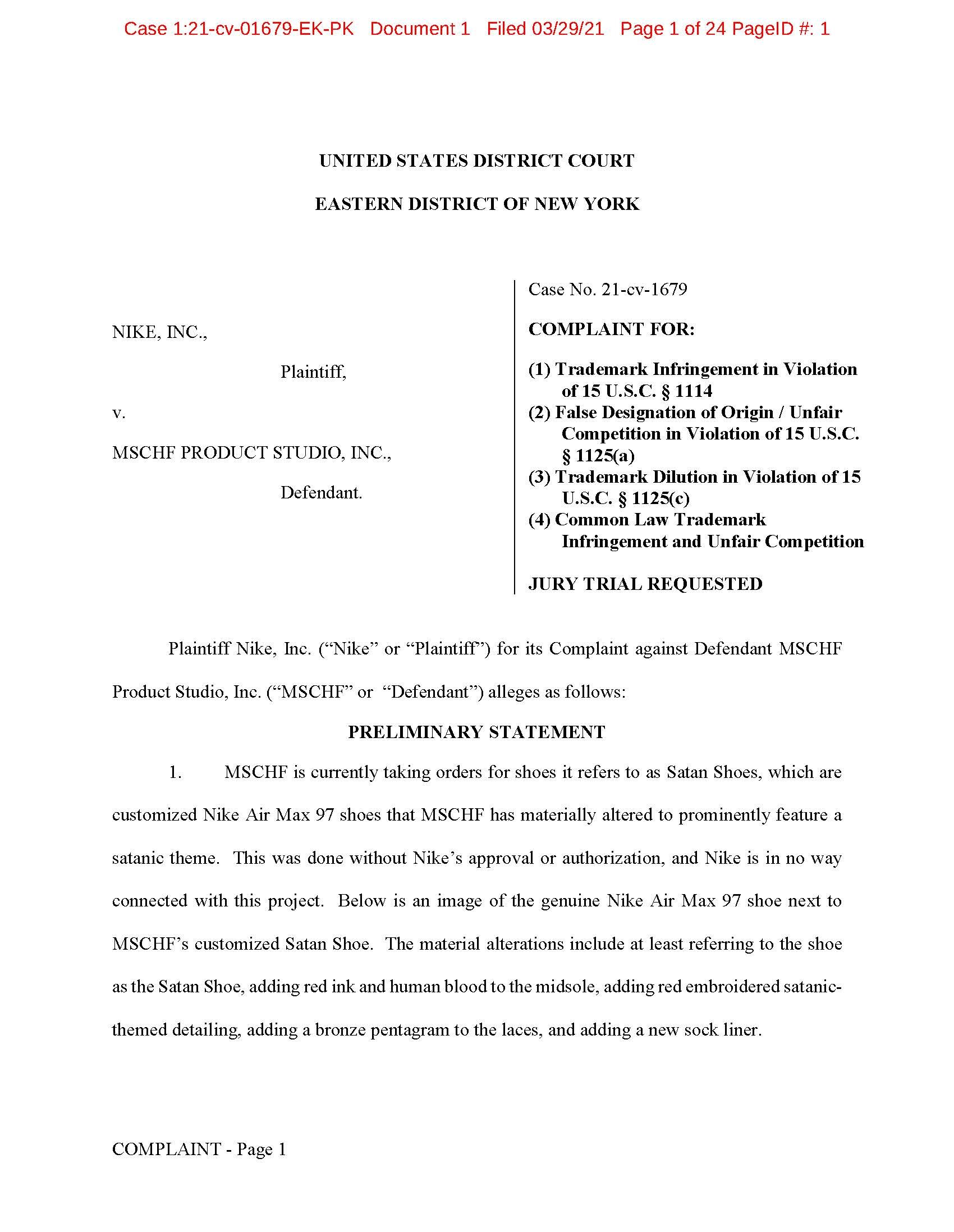
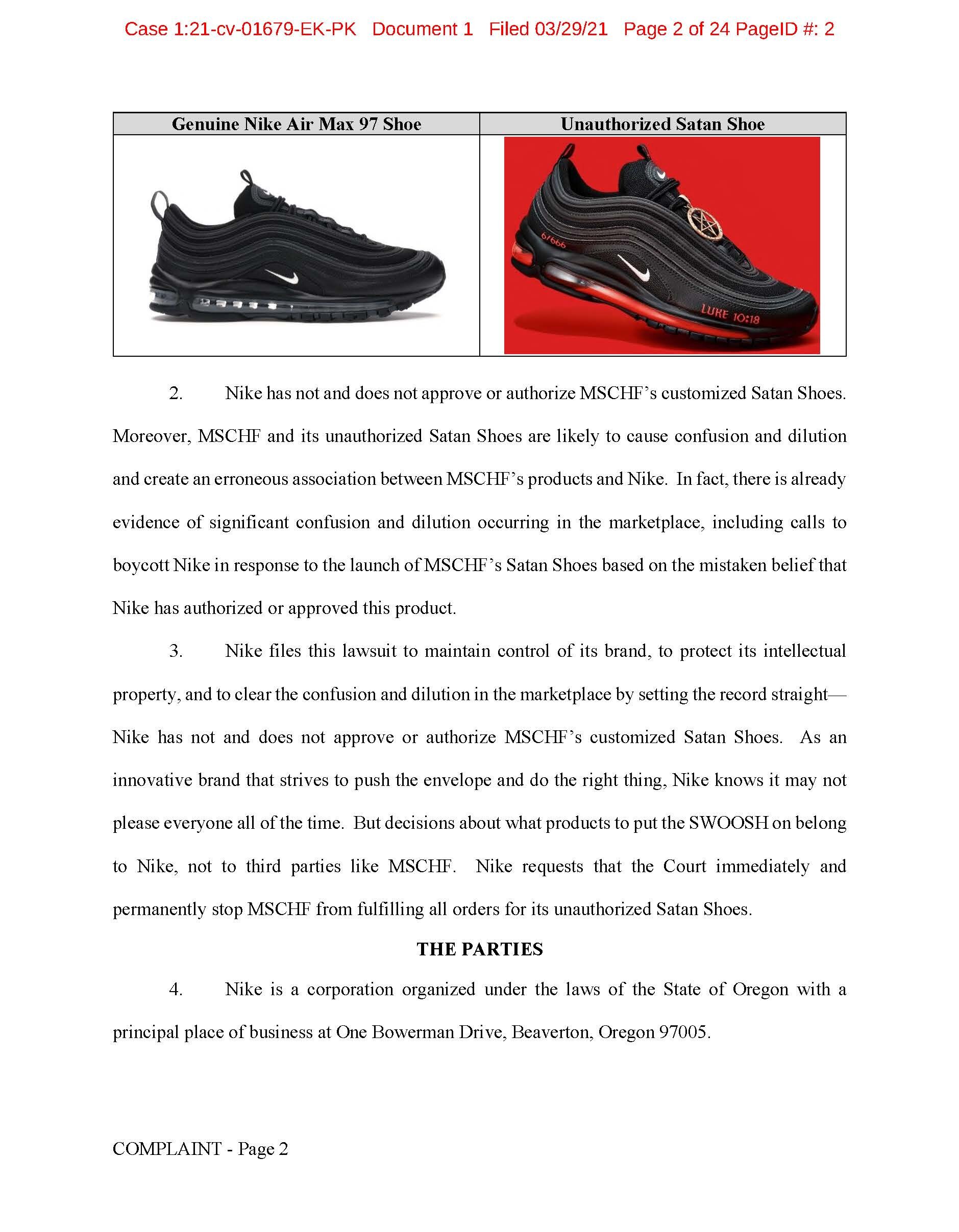
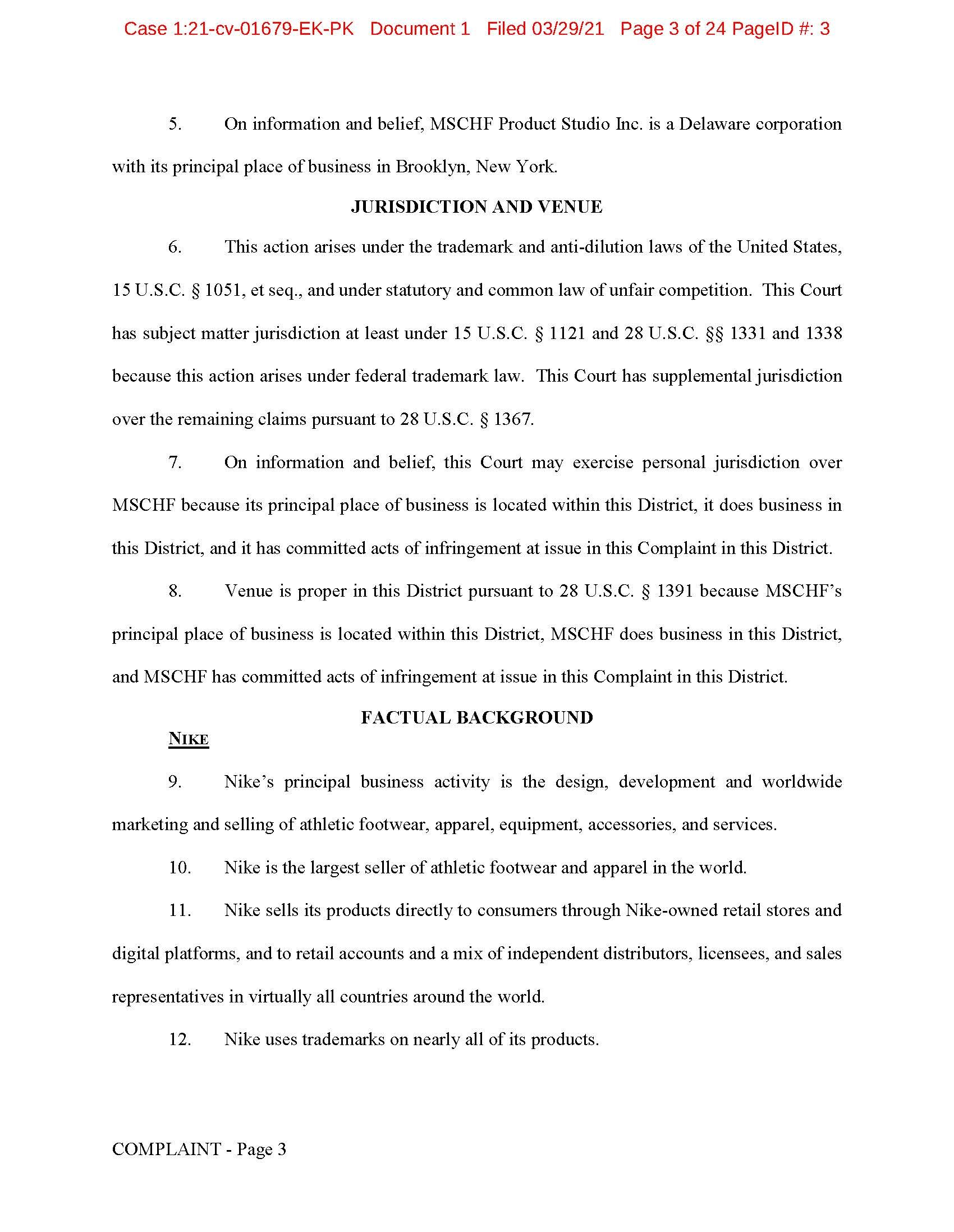
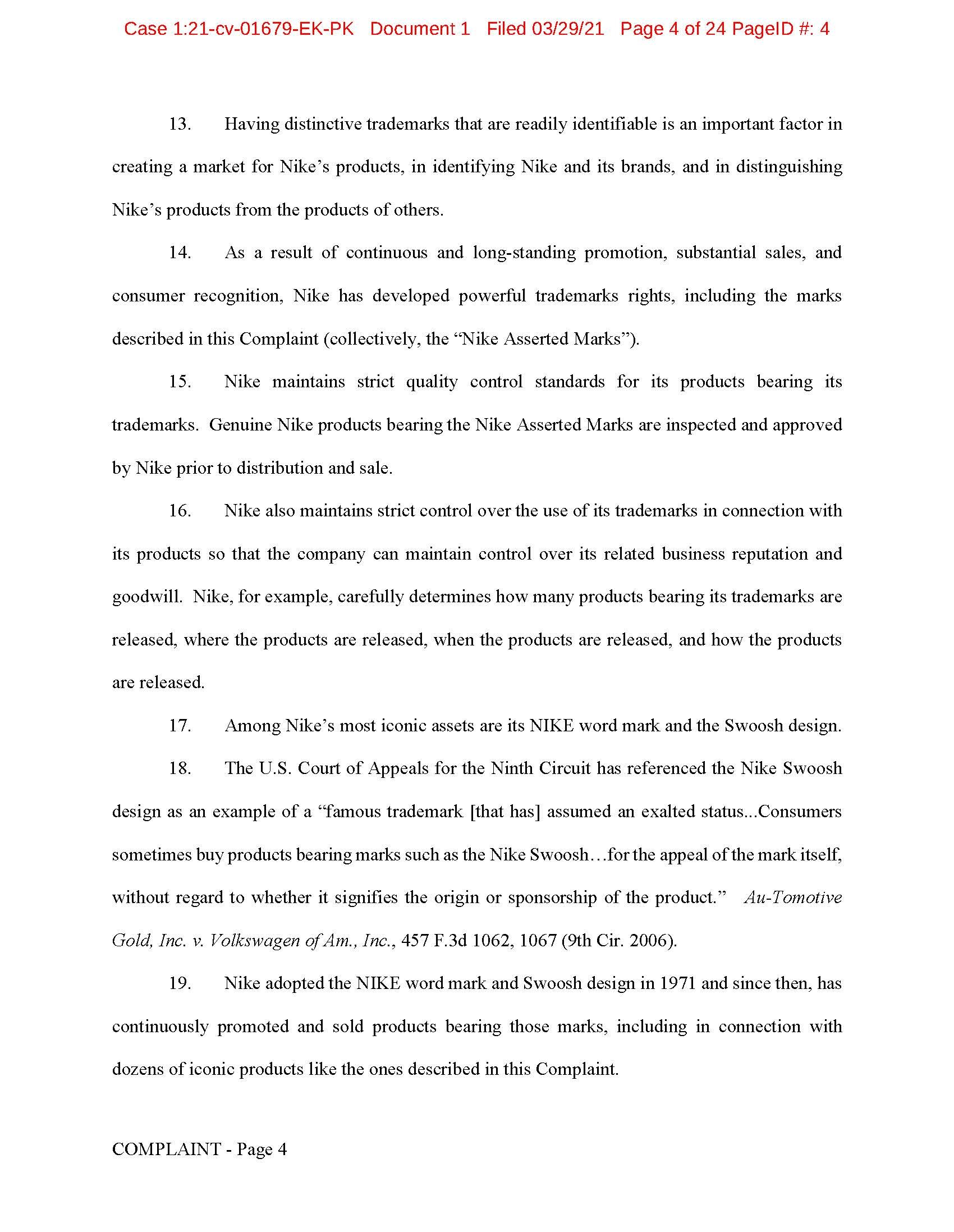
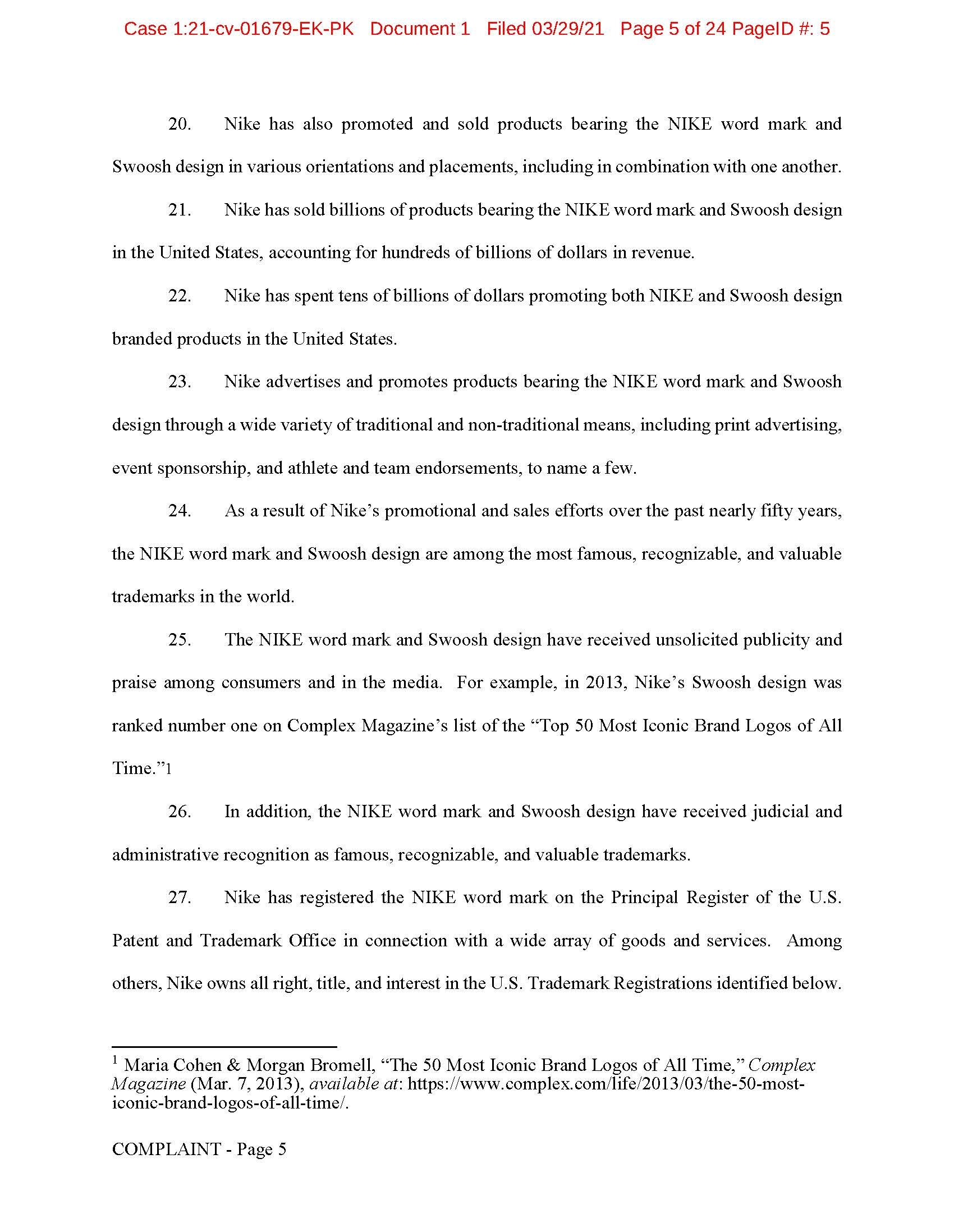
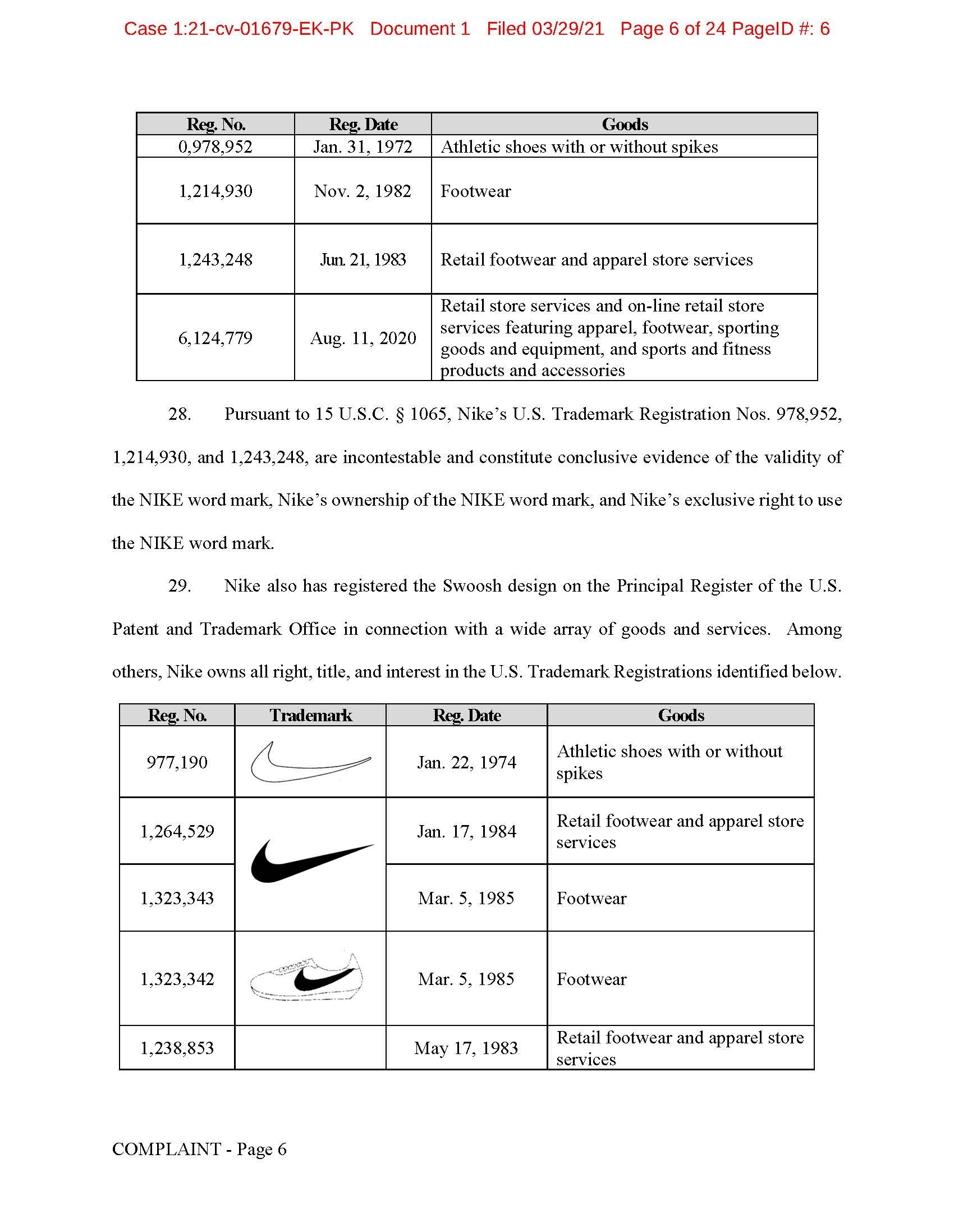
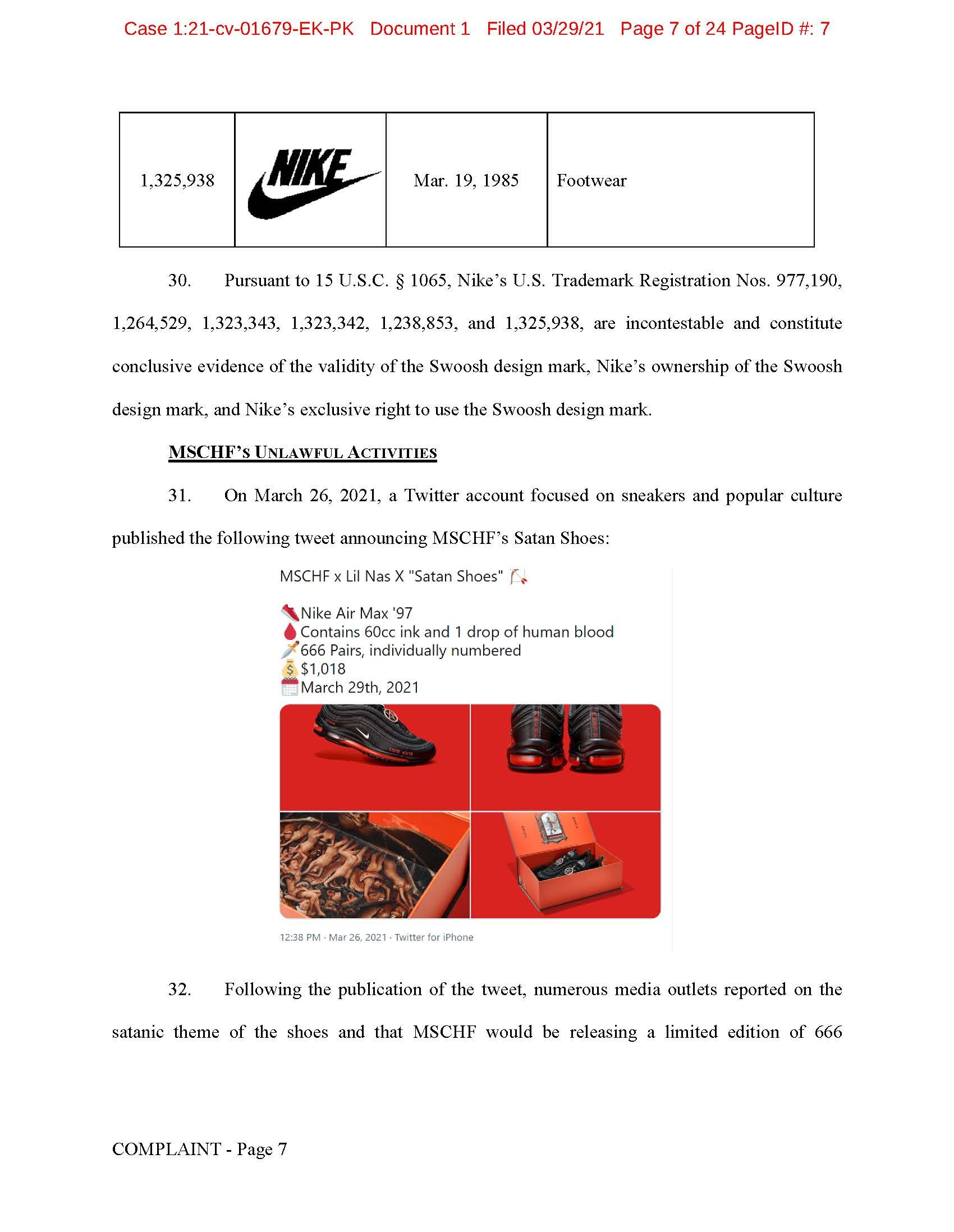
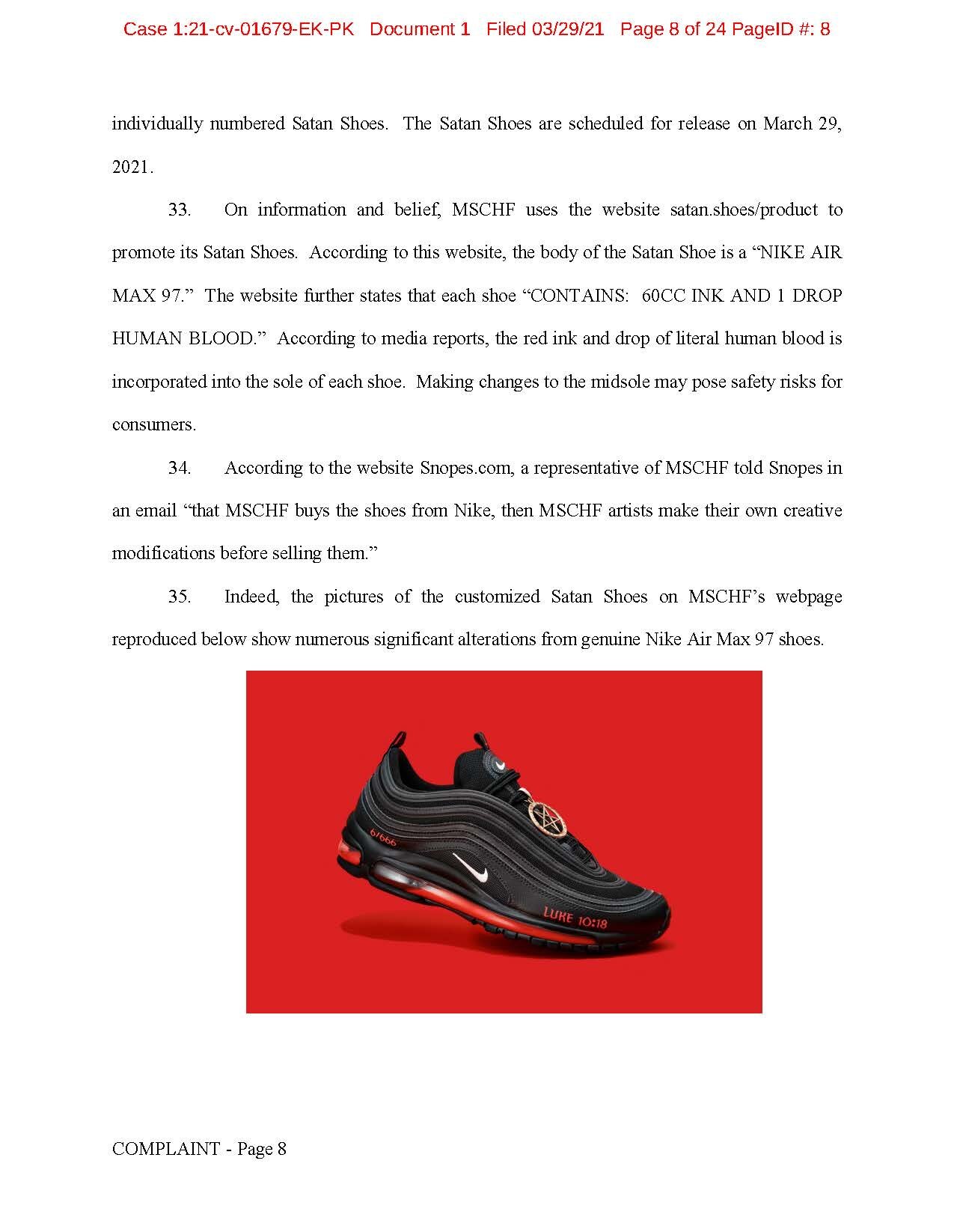

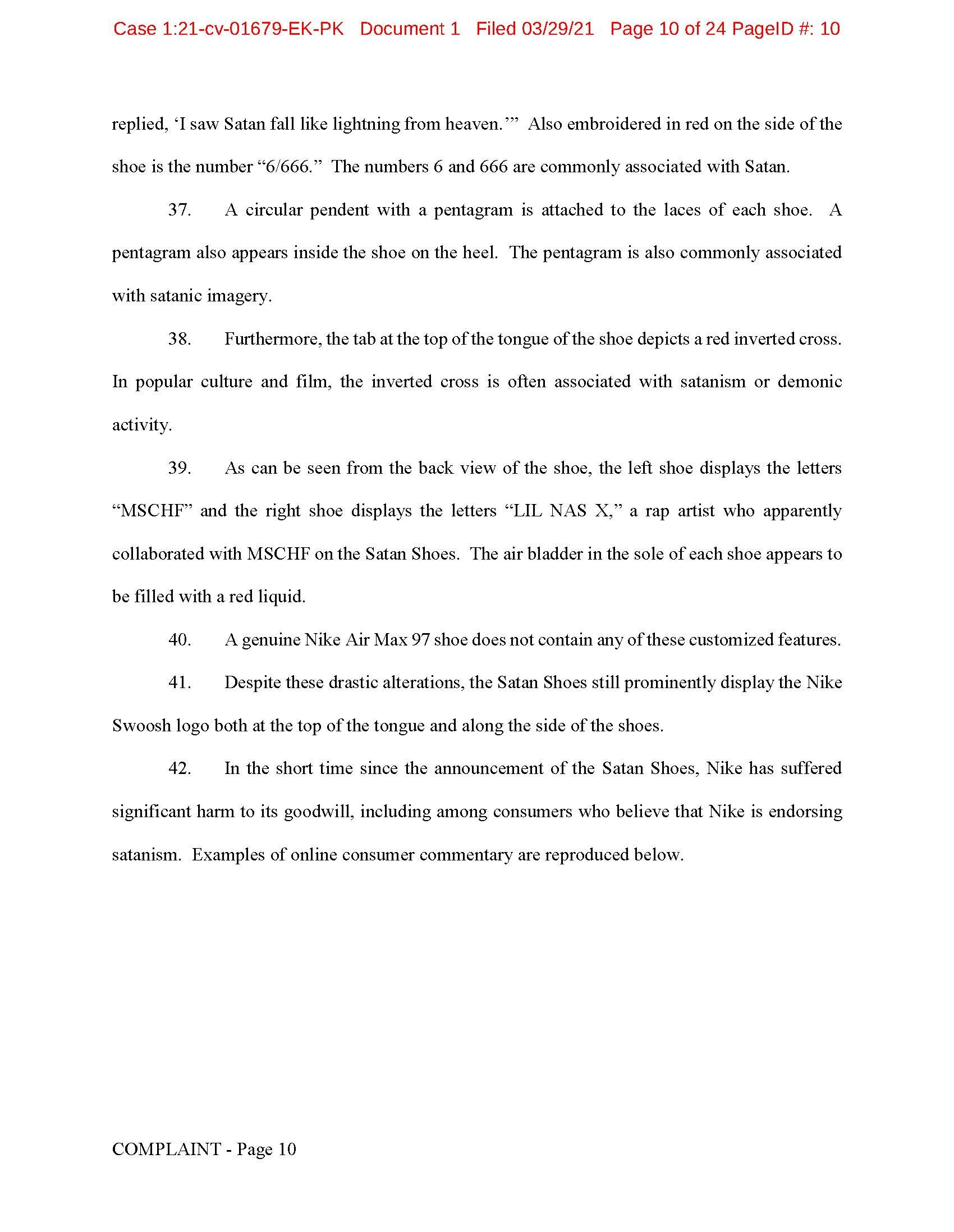
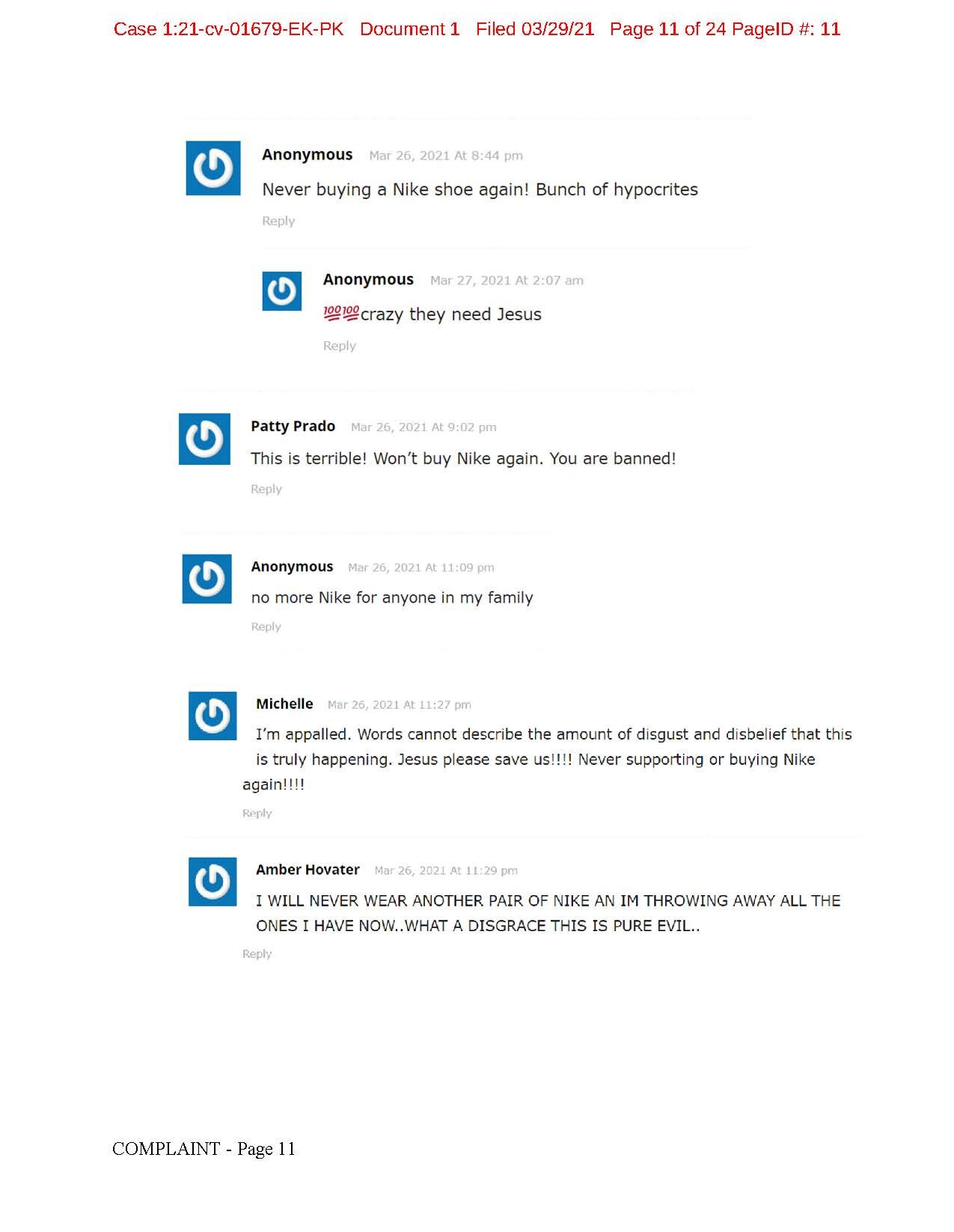
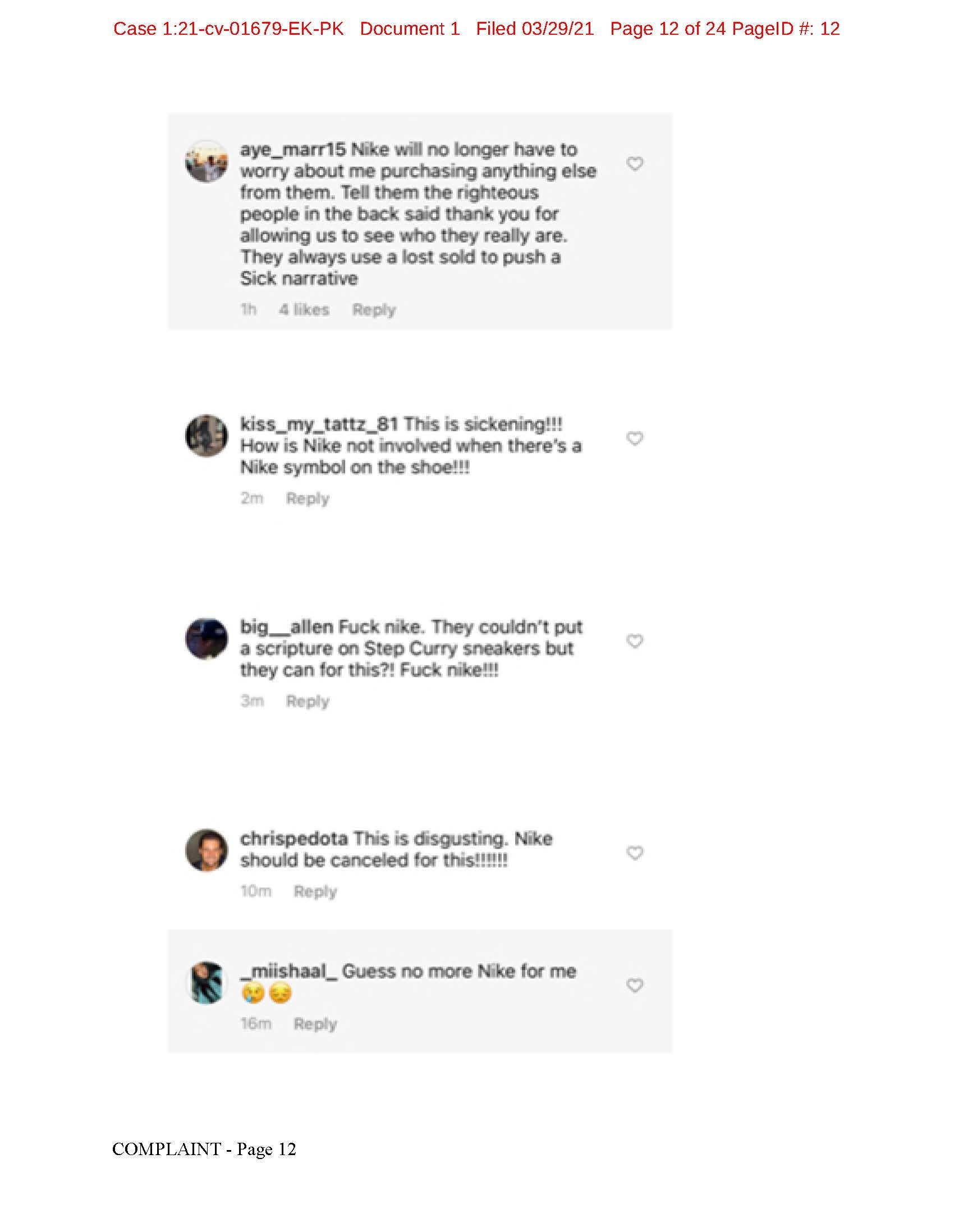
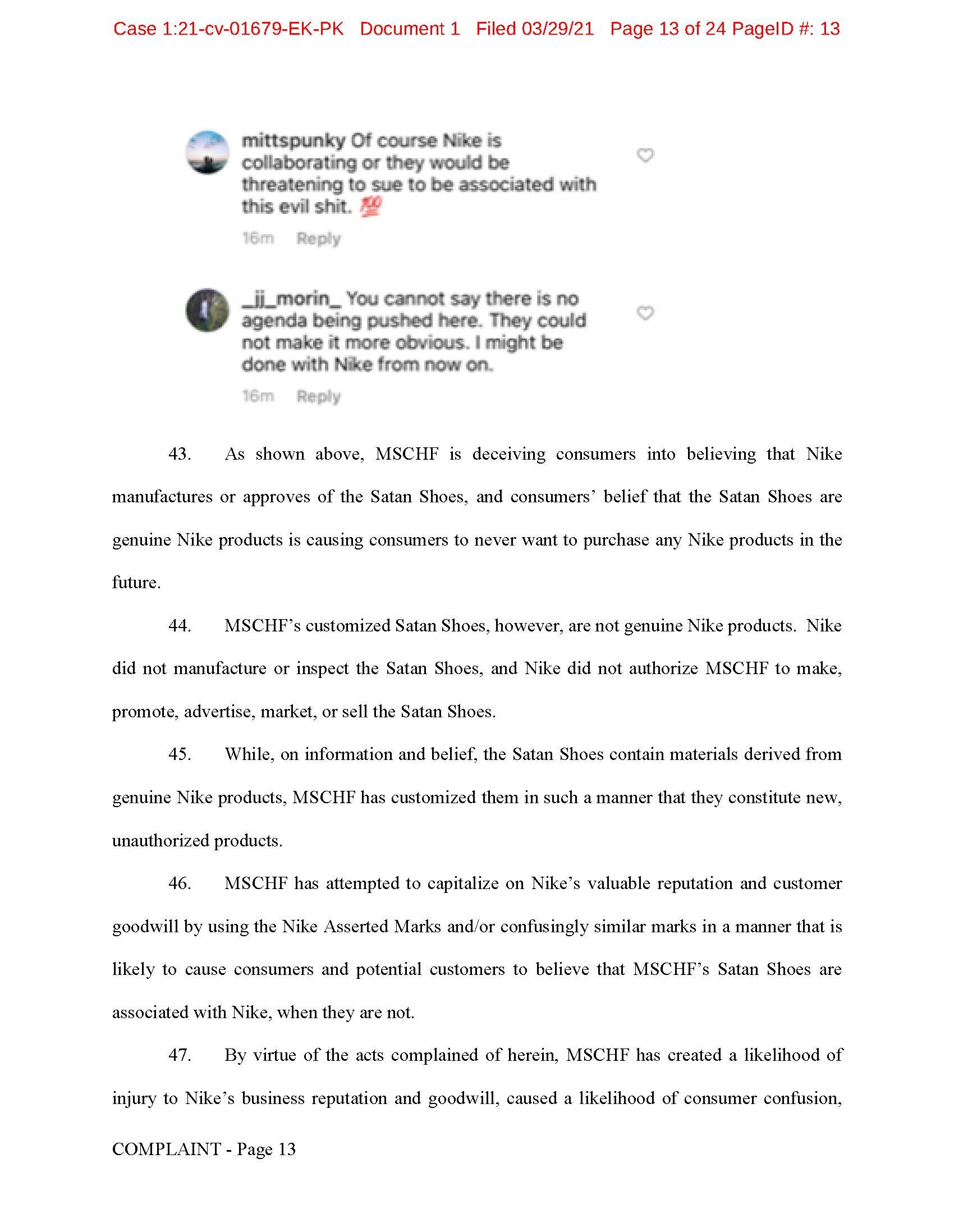
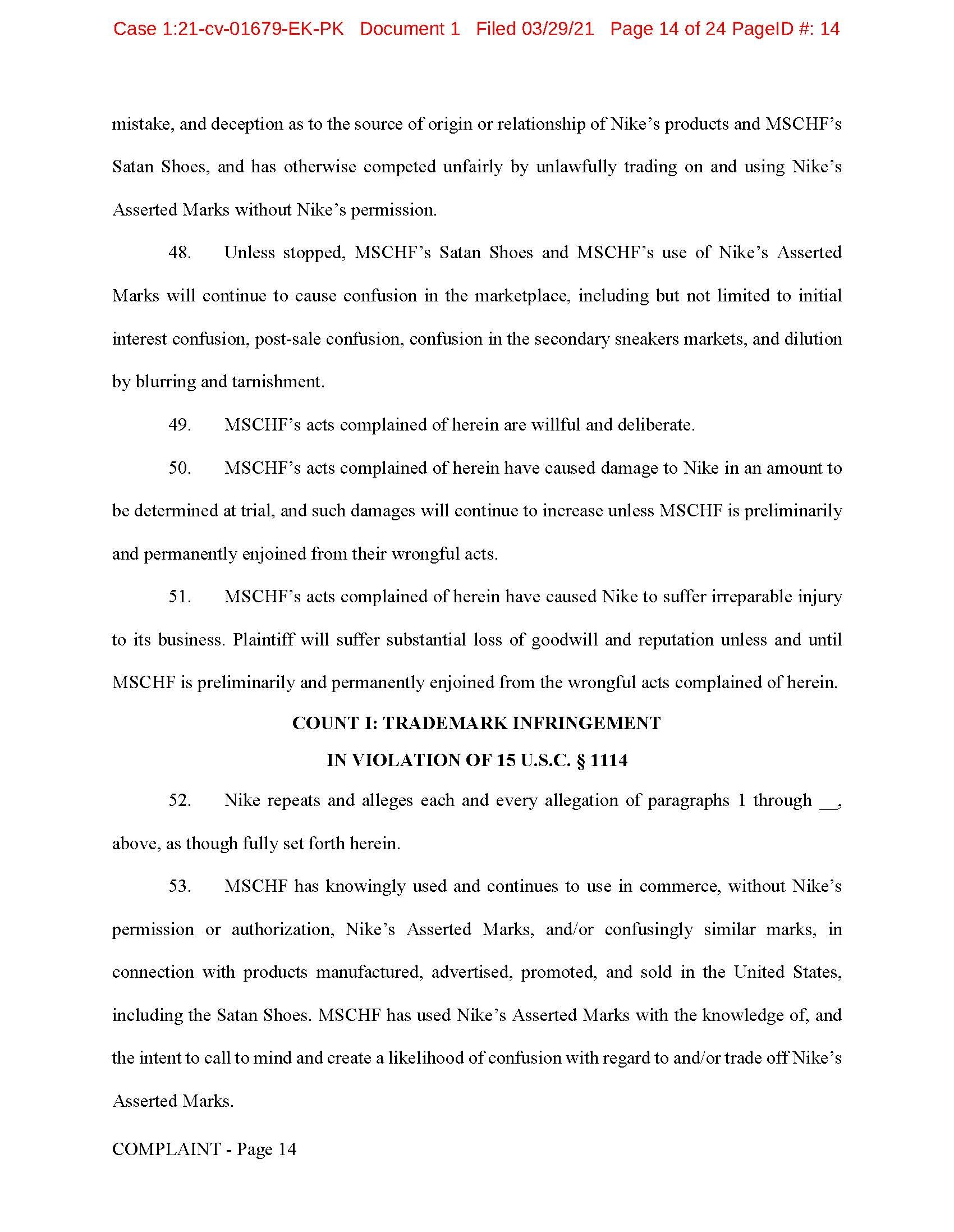
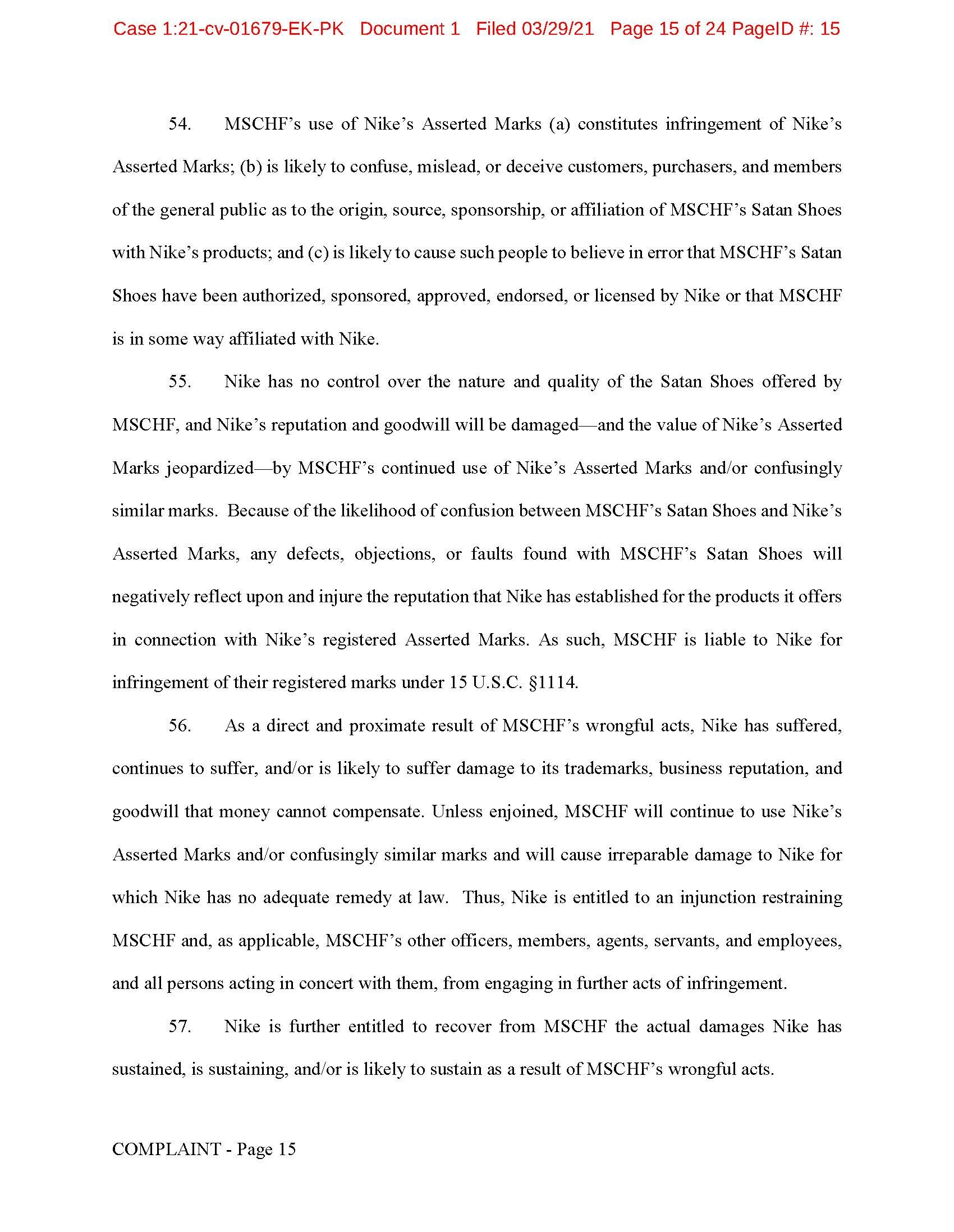
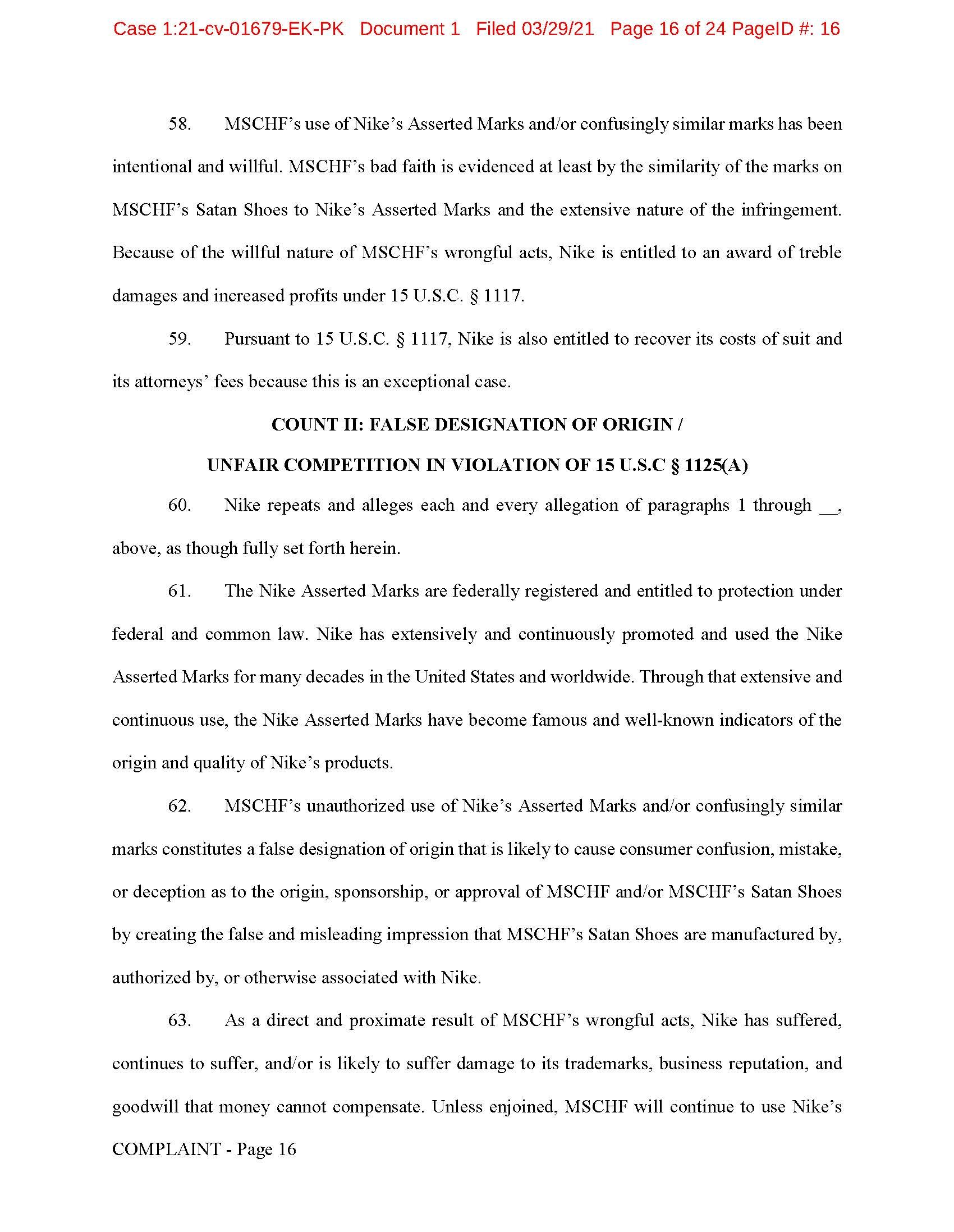
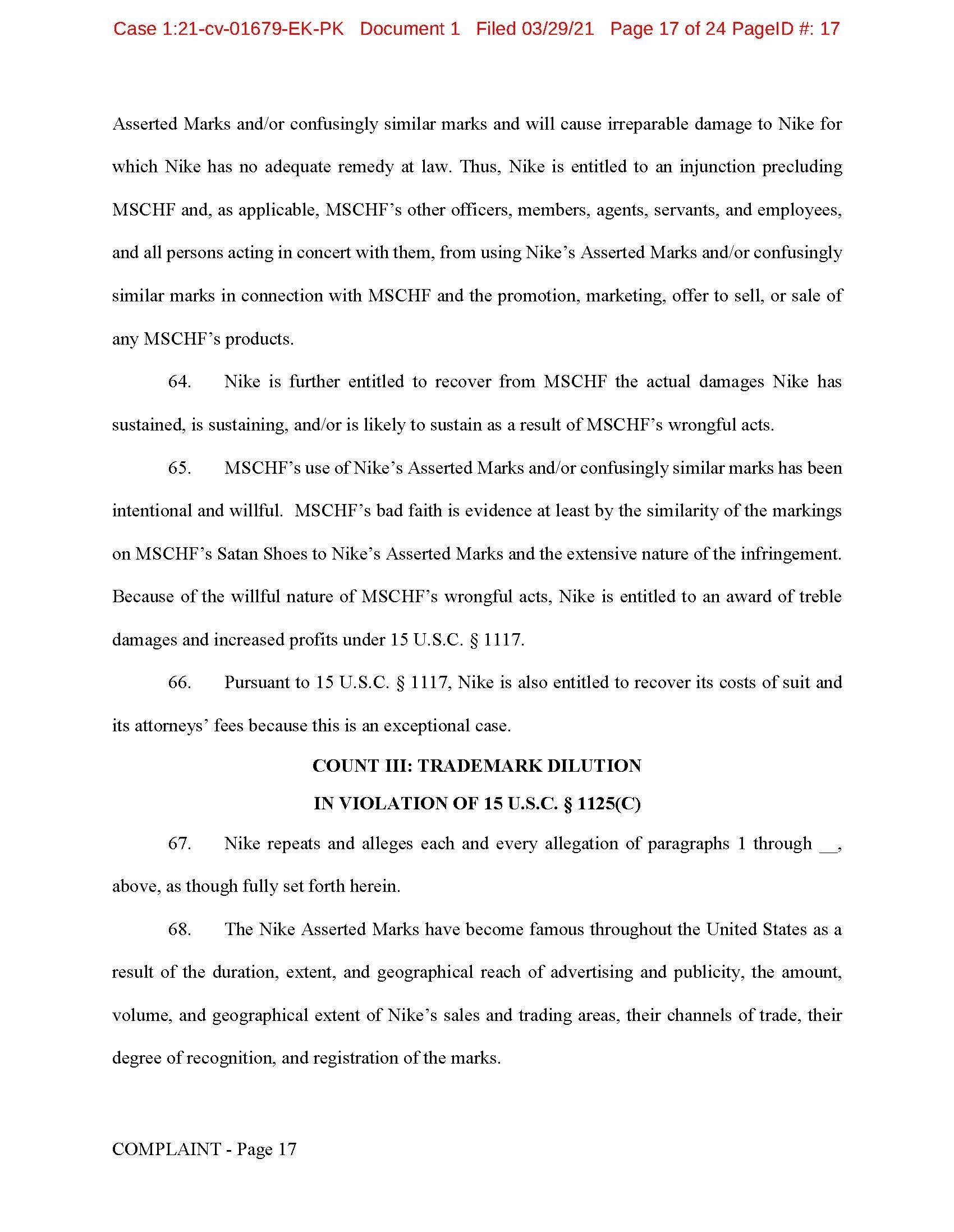
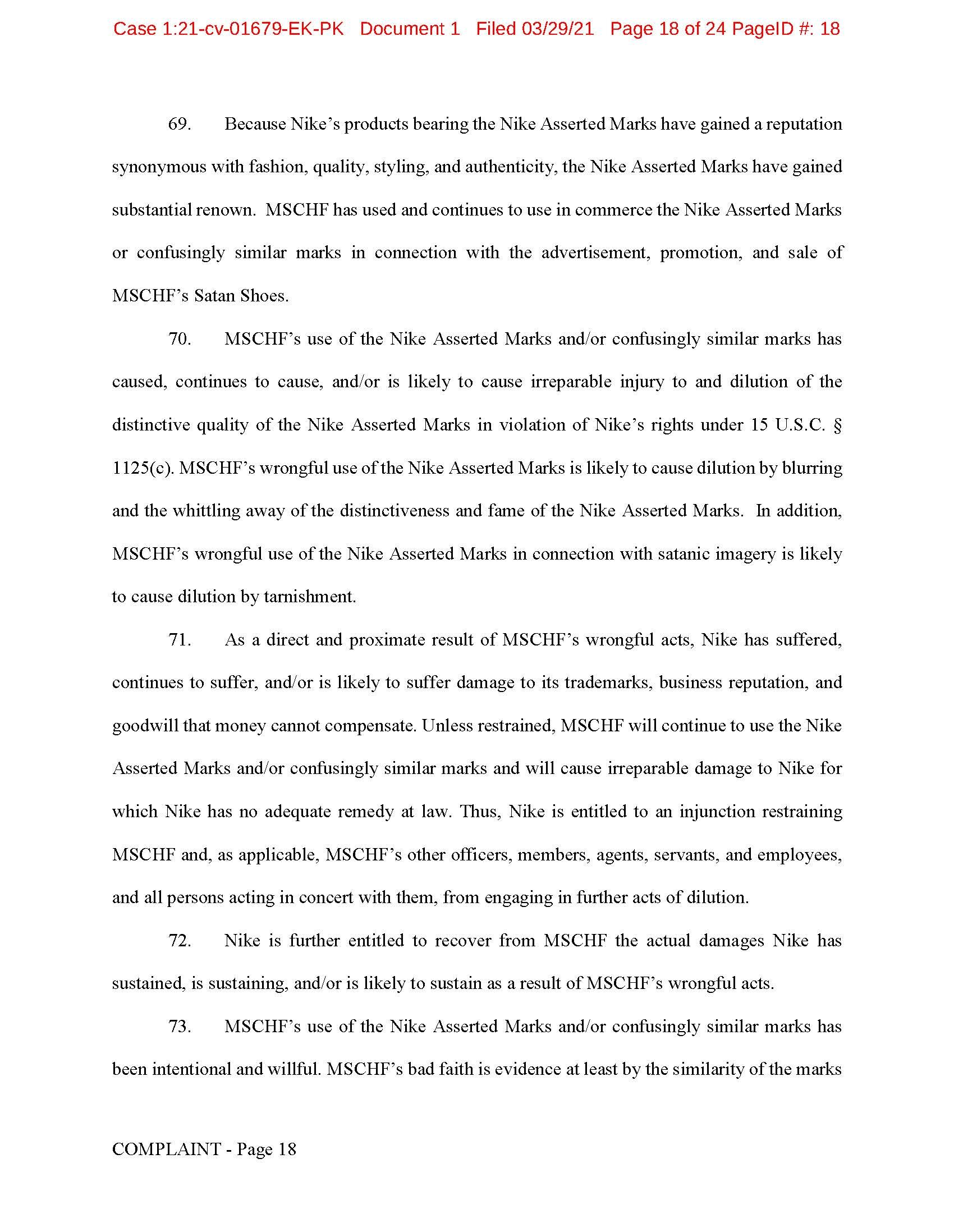
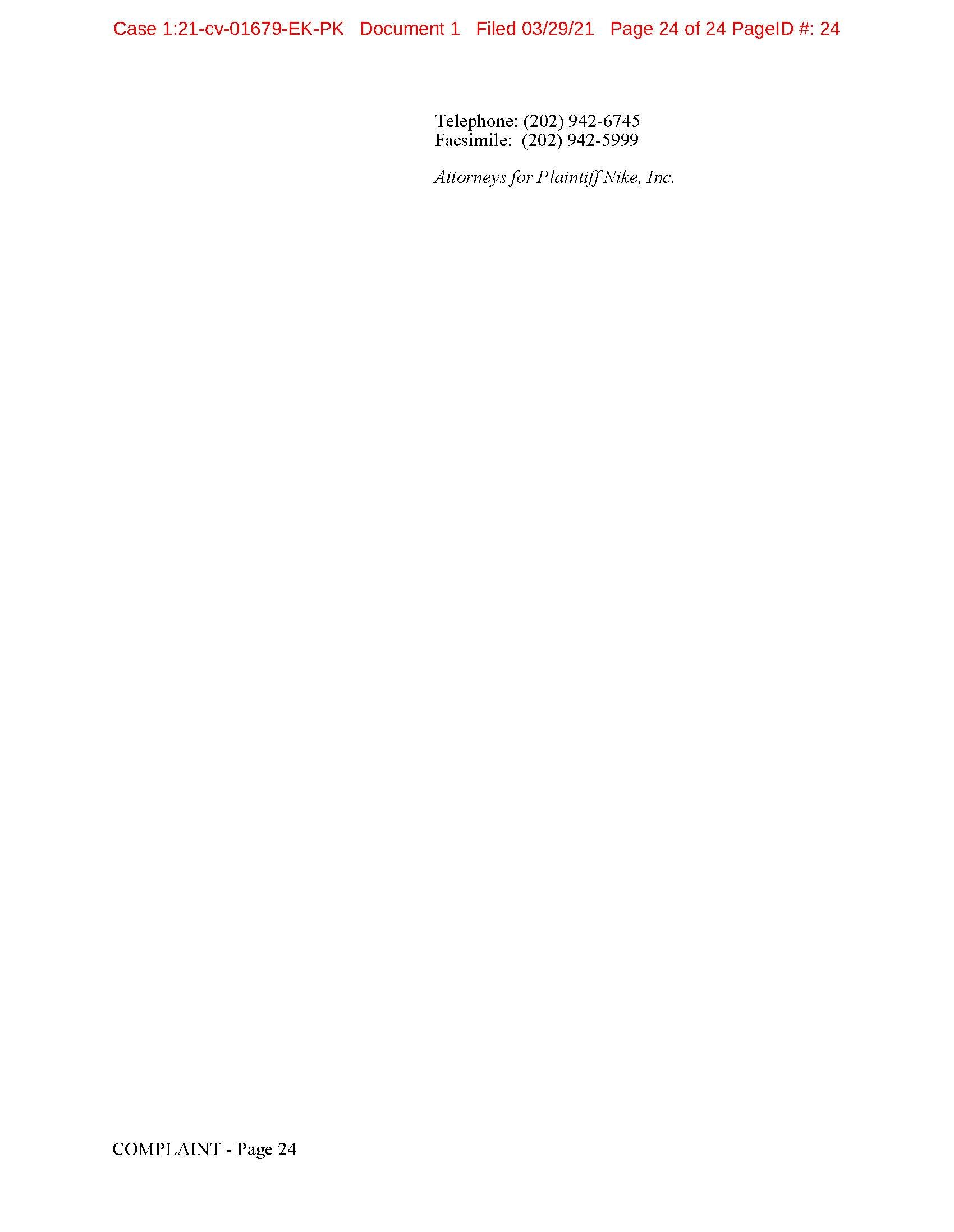
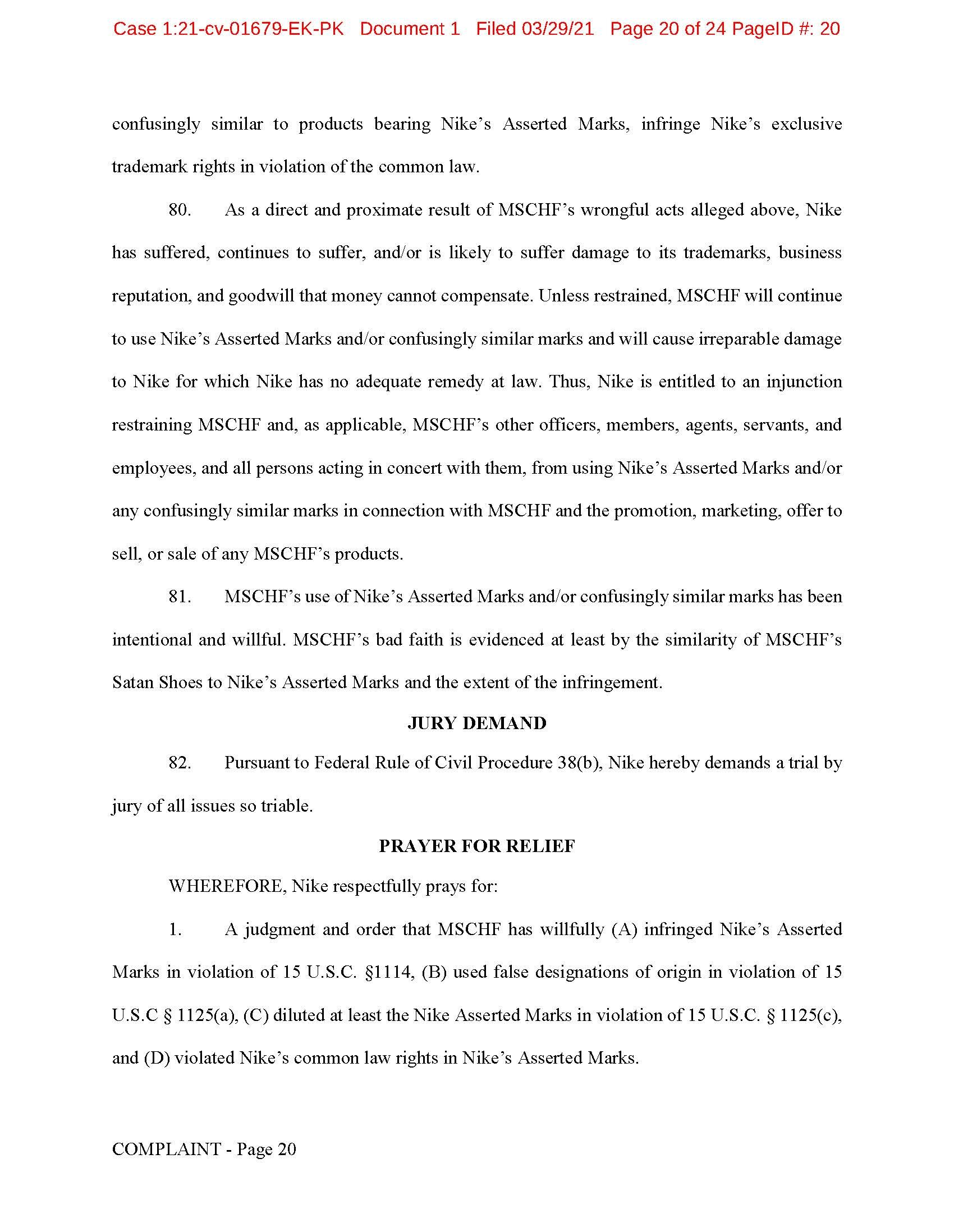
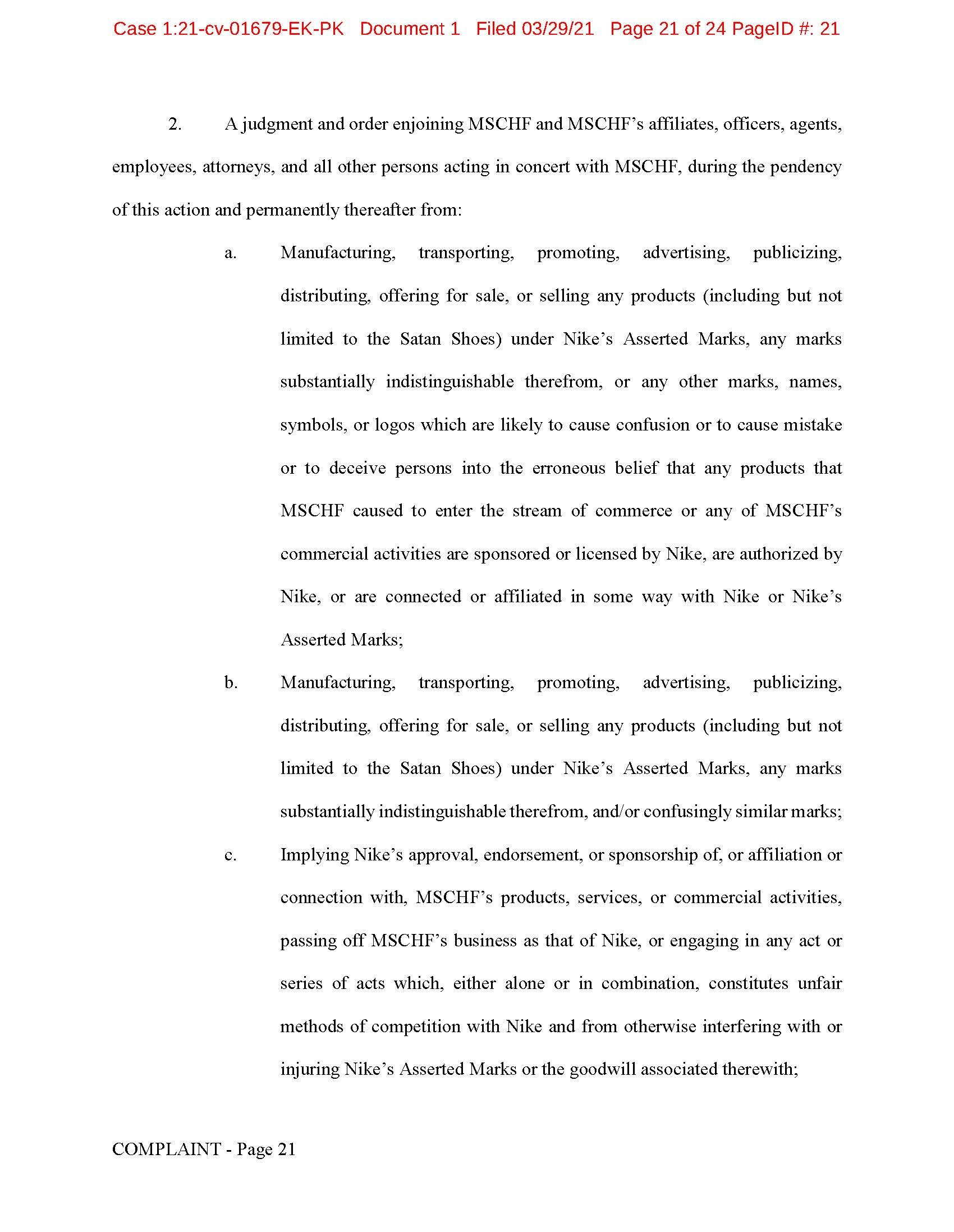
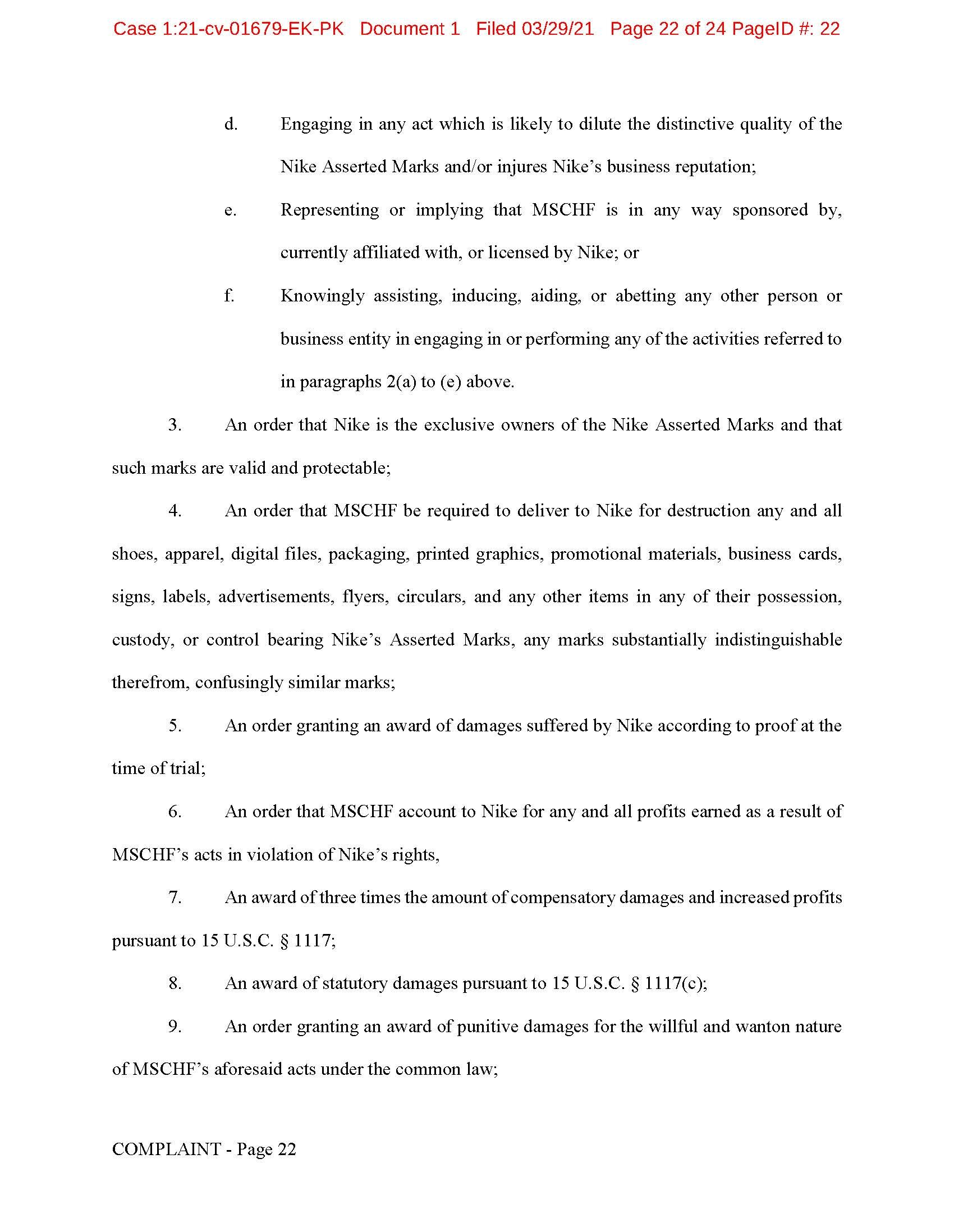
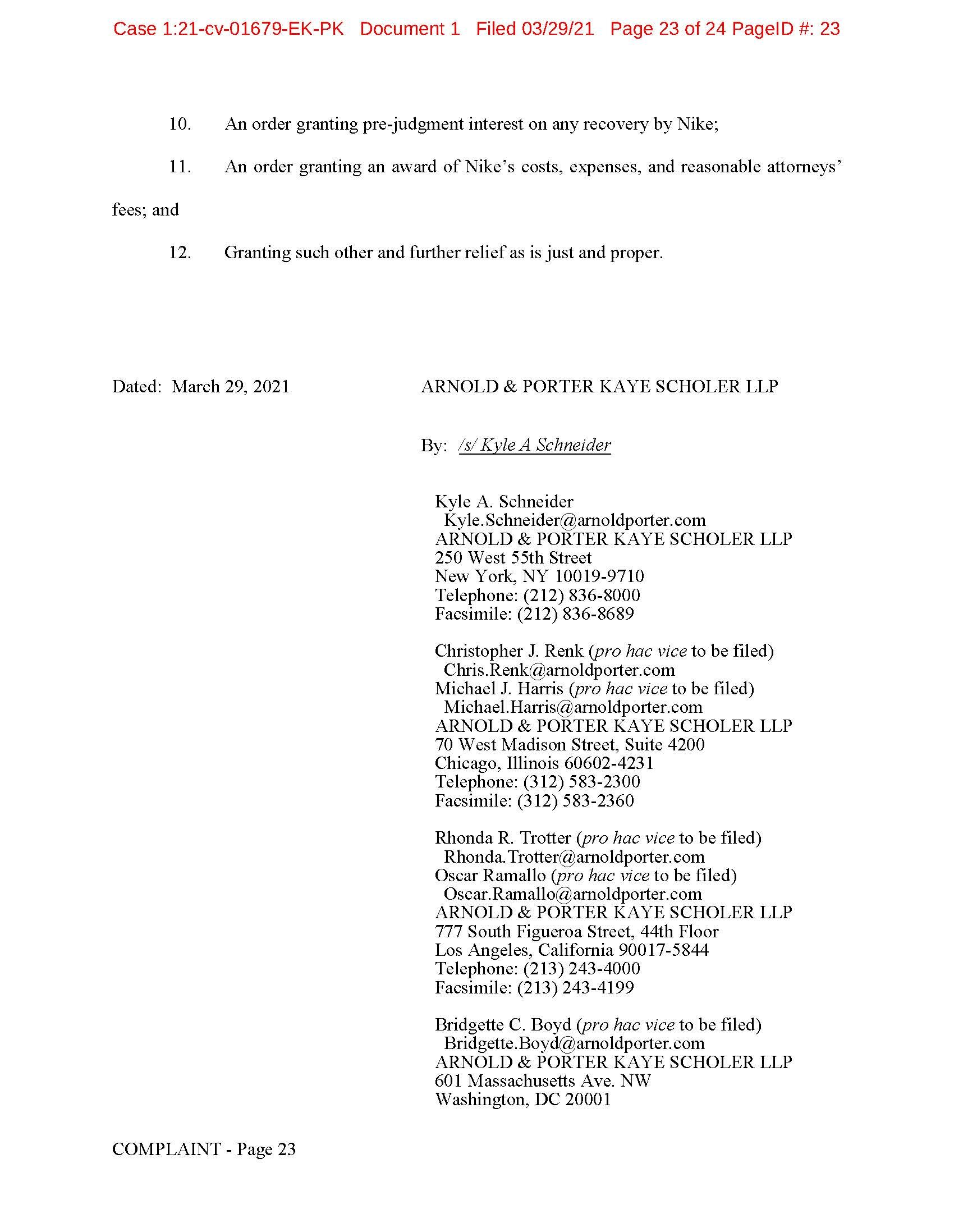
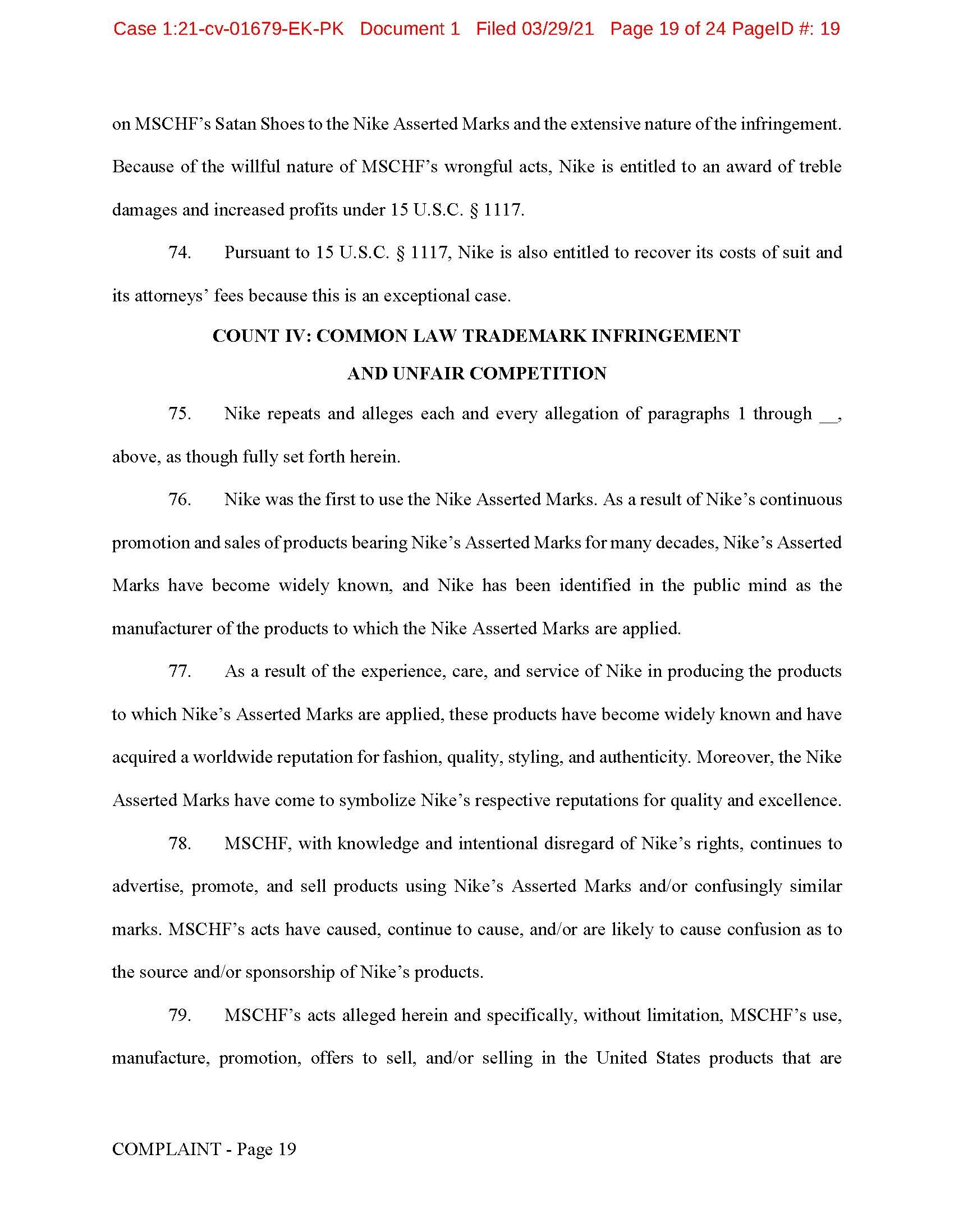
This post will focus on the dilution claims. Under 15 U.S.C. § 1125(c)(2)(B), dilution by blurring occurs when “an association arising from the similarity between a mark or trade name and a famous mark that impairs the distinctiveness of the famous mark.” In its lawsuit, Nike claims MSCHF’s wrongful use of Nike marks will likely blur and whittle away the distinctiveness and fame of the Nike Asserted Marks.
Meanwhile, under 15 U.S.C. § 1125(c)(2)(C), dilution by tarnishment occurs when a famous mark, like the Nike swoosh, is linked to products of shoddy quality, or is portrayed in an unwholesome or unsavory context, thus harming the reputation of the famous mark. For example, Anheuser-Busch successfully enjoined a company from selling a shirt that transformed the Budweiser logo to Buttwiser, as the modified logo portrayed Budweiser in an unflattering and/or unsavory manner. Anheuser-Busch Inc. v. Andy’s Sportswear Inc., 40 U.S.P.Q.2d 1542 (N.D. Cal. 1996). In its lawsuit, Nike alleges that associating the Nike Asserted Marks with satanic imagery is likely to cause dilution by tarnishment.
The complaint pits infringement and dilution against the First Sale Doctrine, a legal theory that gives individuals who buy a copyrighted item the right to resell the product without the creator’s explicit permission. The doctrine enables art collectives like MSCHF to exercise an established brand of creativity to customize purchased shoes and resell them for thousands of dollars. Nike has done little to stop artists in the past because the modified versions undoubtedly contribute to the sneaker culture upon which Nike relies for cultural prominence. For example, MSCHF previously released a modified version of the Nike Air Max 97 that customized the shoe by adding holy water taken from the Jordan River to the mid-soles. The collective named the sneaker “Jesus Shoe,” and Nike did not initiate a lawsuit in response and did not disassociate with Jesus (also smart).
While Nike certainly has a case to make against MSCHF due to the potential for the company to unfairly suffer harm to its brand from the art collective’s continued fulfillment of the orders, resolution of the case could also have an unintended consequence on a part of the creative art industry existentially reliant on the First Sale Doctrine.
One year later: the legal landscape left in the wake of Kobe Bryant's tragic death.
A helicopter with nine people aboard crashed into the foothills of the Santa Monica Mountains this time last year. All nine individuals who were on the helicopter instantly died, including Kobe Bryant and his daughter. Since then, the family members left behind have filed a flurry of lawsuits that leave questions about what happened and who’s at fault unanswered.
A helicopter with nine people aboard crashed into the foothills of the Santa Monica Mountains this time last year. All nine individuals who were on the helicopter instantly died, including Kobe Bryant and his daughter. Since then, the family members left behind have filed a flurry of lawsuits that leave questions about what happened and who’s at fault unanswered.
Vanessa Bryant was the first to file a wrongful death action against the pilot’s estate and his employer, Island Express. A personal administrator can bring an action on behalf of a decedent’s estate when another’s tortious conduct proximately caused the decedent to die. That’s called a wrongful death action. Some theory of liability must underpin the lawsuit; and often that theory is negligence.
Vanessa Bryant’s lawsuit alleges that the pilot flew the helicopter in poor visibility without authorization to fly under those conditions, that the pilot failed to obtain proper weather data before takeoff, and that the pilot failed to abort the flight once it became apparent that the conditions were not safe for flight. Island Express is a defendant because an employer is vicariously liable for the actions of its employee when the employee commits a tort while on the job. The families of other passengers on the helicopter filed similar lawsuits against Island Express.
Mrs. Bryant filed the actions in California Superior Court in Los Angeles County. However, Island Express responded to the complaint with a cross-complaint against the air traffic controllers, and since they are federal employees, the United States District Court for the Central District of California obtained jurisdiction over the lawsuits. Island Express claims that the air traffic controllers were one of the many reasons for the crash, contending that one of the controllers failed to properly terminate radar services and failed to notify an incoming controller of the helicopter’s presence before changing shifts. The estates of the passengers moved to dismiss the cross-complaint, and a federal judge will hear those motions on 8 April 2021. If the judge grants the dismissal, then the case will transfer back to state court in Los Angeles.
That’s where things stand with the wrongful death actions.
Mrs. Bryant also filed an action against Sheriff Alex Villanueva and the Los Angeles County Sheriff’s Department, alleging that the department’s unauthorized release of crash scene photographs was an invasion of her family’s privacy and caused her to suffer severe emotional distress. I wrote about the potential for such lawsuits in a blog post last year.
This action is also still in pretrial stages. However, California’s governor signed into law legislation effective 1 January 2021 that makes it a criminal offense for first responders to take photos of deceased individuals at a crime or accident scene for any purpose other than official law enforcement duties.
We will closely monitor the progress of these lawsuits going forward.
On live the perils of pogue life: North Carolina author sued Netflix for copyright infringement over OBX series.
A North Carolina high school English teacher published a novel in 2016 set in the outer banks of North Carolina, where a group of brooding teenagers prevail against perilous odds to recover hidden treasure from a famous shipwreck. Four years later, Netflix released and distributed the first season of The Outer Banks, a show set in the outer banks of North Carolina, where a group of brooding teenagers prevail against perilous odds to recover hidden treasure from a famous shipwreck.
A North Carolina high school English teacher published a novel in 2016 set in the outer banks of North Carolina, where a group of brooding teenagers prevail against perilous odds to recover hidden treasure from a famous shipwreck. Four years later, Netflix released and distributed the first season of The Outer Banks, a show set in the outer banks of North Carolina, where a group of brooding teenagers prevail against perilous odds to recover hidden treasure from a famous shipwreck.
The show was an instant hit on the streaming platform. Now, the teacher wants credit. His name is Kevin Wooten, and he filed a complaint in the United States District Court for the Northern District of Georgia on 21 December 2020 alleging there exists “striking” and “overwhelming” similarities between the show and his novel, Pennywise: The Hunt for Blackbeard’s Treasure!
Wooten maps those parallels in the hereunder chart attached to his complaint as an exhibit.
Unsurprisingly, he did not chomp at the bit to take credit for the creation of a mystical waterway that links the coast of North Carolina to Chapel Hill. Notwithstanding that distinction, Wooten contends that the creators of the show willfully infringed on his registered copyright in violation of 17 U.S.C. § 501. Pursuant to that statute, he can establish a prima facie case of infringement by demonstrating that (1) he owns a valid copyright in the novel protecting his work; and (2) the creators of the show copied constituent elements of his protected work that are original. Feist Publ’ns, Inc. v. Rural Tel. Serv. Co., 499 U.S. 340 (1991).
He attached what he purports to be a true and accurate copy of the copyright registration for his novel to the complaint in a separate exhibit. That presumptively establishes the first element.
The second element is trickier. Direct evidence is rare because people generally pay in advance for permission to blatantly copy another’s work for commercial gain. However, circumstantial evidence may be used to show copying in the absence of direct evidence. Such circumstantial evidence includes: (1) proof of access to the infringed work; or (2) if no proof of access, then a striking similarity between the works. Rentmeester v. Nike, Inc., 883 F.3d 1111, 1116-17 (9th Cir. 2018) (holding that substantial similarity is established when there are similarities between the two works that one would not expect to arise if the two works had been created independently). Wooten alleges that the creators lived in Wilmington when he promoted the book to local audiences. It was also available online through various online retailers like Amazon. Since publication, readers purchased hundreds of electronic and printed copies of the book, according to the complaint. Meanwhile, the show’s creators acknowledged in an interview with Star News Online that inspiration for the series came from their time spent in Wilmington and exposure to third-party adventure novels. Wooten contends that such access, in combination with the indistinguishable core elements between the book and show, establishes circumstantial evidence of copying to satisfy the second element. He wants damages and credit on the platform for his creation, naming Netflix and the show’s creators as defendants in the action.
And so now begins a quest of his own: can Wooten channel the spirit of his characters to prevail against the streaming giant?
North Carolina lawmakers enacted two major criminal justice reform bills at the end of June, the First Step Act and the Second Chance Act.
Rare bipartisan advocacy resulted in significant progress for criminal justice reform in North Carolina once Governor Cooper signed two legislative bills into law at end of June. House Bill 511, the First Step Act, provides judges wiggle room in levying sentences for qualifying criminal defendants charged with drug trafficking. Meanwhile, Senate Bill 562, the Second Chance Act, enhances the ability for individuals to expunge their criminal records.
Rare bipartisan advocacy resulted in significant progress for criminal justice reform in North Carolina once Governor Cooper signed two legislative bills into law at end of June. House Bill 511, the First Step Act, provides judges wiggle room in levying sentences for qualifying criminal defendants charged with drug trafficking. Meanwhile, Senate Bill 562, the Second Chance Act, enhances the ability for individuals to expunge their criminal records.
Prior to the First Step Act, judges were required to administer sentences consistent with mandatory minimum punishments for defendants convicted with drug trafficking. Under the mandatory minimums, a person could face between 25 to 225 months in prison for each count and a fine of $5,000 to $250,000. Their design was to impose severe consequences for major drug dealers in the state. However, it led to harsh results for some individuals without the connection to a major drug operation, and many judges dealt fines to defendants who had no means to satisfy them. The new law now allows a judge to bypass mandatory minimums under certain conditions and also allows a person serving a sentence solely imposed for a violation of drug trafficking to file a motion for appropriate relief for a sentence modification.
The Second Chance Act allows people with nonviolent criminal records to expunge misdemeanors and low-level felonies if they fully complied with the terms of their sentence and they committed the crime in question when between the ages of 16 and 18. In addition, the bill automatically expunges charges when the state dismisses them, when found not guilty, or when found not responsible beginning after December 1, 2021.
Both the First Step Act and the Second Chance Act are steps in the right direction for criminal justice reform in North Carolina. They pay homage to the idea that no person should be defined by their worst moment.


